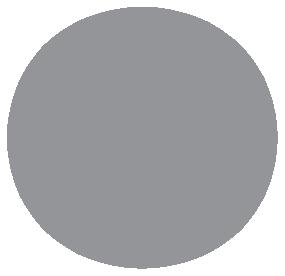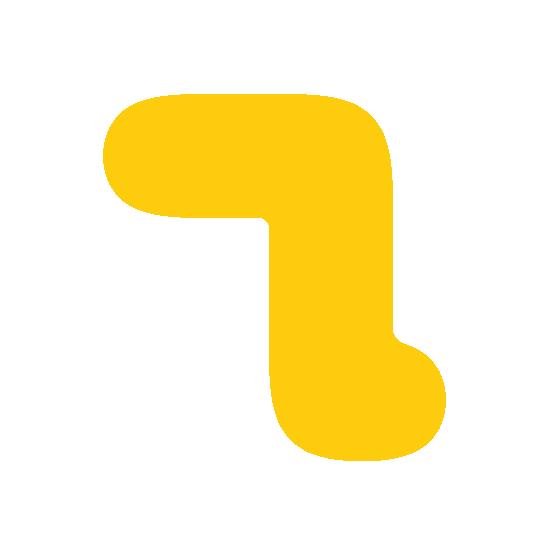




(TNB), Malaysia’s Premier Utility Company


















(TNB), Malaysia’s Premier Utility Company












Xypex System Solutions were specified in Hong Kong’s Tsuen Wan West MTR Station. Built using cut and cover construction techniques, this 400 meter long, 60 meter wide box structure is approximately 15 meters below gradient in reclaimed land alongside Hong Kong Harbour.
Xypex Admix C-1000 NF has been cast into in excess of 75,000 cubic meters of concrete to enhance the durability performance by blocking the pores and healing the static cracks up to 0.4 mm, offering an integral solution that is able to significantly extend the service life of reinforced concrete structures exposed to aggressive environments.
Over 30,000 kgs of Xypex Concentrate have been applied to repair and protect diaphragm walls, construction joints, etc. Over 15,000 kgs of the specialist repair mortar MP&P have been applied in general repairs such as tie bolt holes, as well as to create bedding for hydrophyllic water stops.
For more information on how our solutions can provide sustainable benefits for your concrete assets, please visit our website at www.xypex.com.au or LinkedIn Page.
Tel: +603-51928186 Fax: +603-51926826 Email:

Hikvision’s Parking Guidance
Solves Real-World Parking Problems for Good
Whether it’s a small parking lot or a busy, multi-level garage, parking headaches turn visitors or customers away. Solve that problem for good with Hikvision’s Smart Parking Guidance Solution. Give customers quick entry and exit with Hikvision ANPR cameras, precise parking navigation using a guidance screen, and straightforward vehicle search with Hikvision Find My Car Kiosk system. Resolving accident disputes is simple since Hikvision Parking Lot Guidance Cameras double as surveillance cameras. This solution is easy to install, initialize, operate, and maintain, whether at schools, offices, or shopping centers.
Solve parking problems and keep customers happy and safe. With Hikvision.



HIKVISION (MALAYSIA) SDN. BHD.
T +60327224000
F +60327224022
Sales Email: sales.my@hikvision.com 301, Level 3 of Menara LGB,No. 16 Jalan Wan Kadir, Taman Tun Dr. Ismail, 60000 Kuala Lumpur

Number 08, AUGUST 2018IEM Registered on 1 May 1959
Majlis Bagi s esi 2018/2019 (ie M Cou n C il s essio n 2018/2019)
yANG D I p ERTUA / pRESIDENT
Ir. David Lai Kong Phooi
T
IM b A l AN yANG D I p ERTUA / D E p UT y pRESIDENT
Ir. Ong Ching Loon
n ai B Yang Diper tua / Vi C e p resi D ents
Ir. Prof. Dr Ruslan bin Hassan, Ir. Lai Sze Ching, Ir. Lee Boon Chong,
Ir. Prof. Dr Norlida bt Buniyamin, Ir. Prof. Dr Jeffrey Chiang Choong Luin, Ir. P E Chong, Ir. Gopal Narian Kutty
s etiausaha Kehor M at / h onorarY s eC retarY
Ir. Mohd Khir bin Muhammad
bENDA h ARI K E ho RMAT / h o N o RARy T REASURER
Ir. Dr Tan Chee Fai
bEKAS yANG DI p ERTUA TERAK h IR / IMMEDIATE pAST pRESIDENT
Ir. Dr Tan Yean Chin
b EKAS yANG DI p ERTUA / pAST pRESIDENTS
Y.Bhg. Academician Tan Sri Dato’ Ir. (Dr) Hj. Ahmad Zaidee bin Laidin, Y.Bhg Dato’ Ir. Dr Gue See Sew, Y.Bhg. Dato’ Paduka Ir. Prof. (Dr) Haji Keizrul bin Abdullah, Y.Bhg. Academician Dato’ Ir. Prof. Dr Chuah Hean Teik, Ir. Choo Kok Beng
Wa K il aWa M / Ci V il r epresentati V e
Ir. Dr Lee Yun Fook
Wa K il M e K ani K al / MeC hani C al r epresentati V e
Ir. Fam Yew Hin
Wa K il e le K t r i K / e leC tri C al r epresentati V e
Ir. Lim Kim Ten
Wa K il s tru K tur / s tru C tural r epresentati V e
Ir. Dr Ng Soon Ching
Wa K il Ki M ia / Che M i C al r epresentati V e
Ir. Prof. Dr Lee Tin Sin
Wa K il lain-lain D isplin / r epresentati V e to other Dis C iplines
Ir. Roznan bin Abdul Rashid
Wa K il M ulti M e D ia Dan i C t / i C t an D Multi M e D ia r epresentati V e
Ir. Dr David Chuah Joon Huang
WAKI l J URUTERA WANITA / W o MAN ENGINEERS R E p RESENTATI v E
Ir. Mah Siew Kien
ahli M ajlis / Coun C il Me MB ers
Ir. Assoc. Prof. Dr Ahmad Kamil bin Arshad, Ir. Dr Tan Kuang Leong, Ir. Hoo Choon Sean, Y.Bhg. Lt. Jen. Dato’ Wira Ir. Ismail bin Samion (Ret. RMAF), Y. Bhg. Dato’ Ir. Hj. Anuar bin Yahya, Ir. Mah Way Sheng, Ir. Gunasagaran a/l Kristnan, Ir. Chen Harn Shean, Ir. Mohd Aman bin Hj. Idris, Ir. Wong Chee Fui, Ir. Prof. Dr Leong Wai Yie, Ir. Razmahwata Mohd Razalli, Ir. Abdul Razak Yakob, Ir. Yau Chau Fong, Y. Bhg. Dato’ Ir. Foong Choy Chye, Y. Bhg. Dato’ Ir. Kisai bin Rahmat, Y. Bhg. Dato’ Ir. Nor Hisham bin Mohd. Ghazali, Ir. Ellias bin Saidin, Ir. Dr Jeyanthi Ramasamy, Ir. Dr Wang Hong Kok, Ir. Yam Teong Sian, Y. Bhg. Dato’ Ir. Hj. Fakharazi bin Hj. Wahijan, Ir. Yasotha Ramachandran Chetty, Ir. Mohmad Asari bin Daud, Ir. Salimi bin Md Saleh, Ir. Dr Lai Khin Wee pengerusi C aWangan / B ran C h C hair M an
1. Pulau Pinang: Ir. Ting Chek Choon
2. Selatan: Ir. Teo Ki Yuee
3. Perak: Ir. Abdul Razak bin Ali
4. Kedah-Perlis: Ir. Prof. Dr Rezuwan bin Kamaruddin
5. Negeri Sembilan: Ir. Dr Oh Seong Por 6. Kelantan: Ir. Abrizan bin Abdul Kadir
7. Terengganu: Ir. Atemin bin Sulong
8. Melaka: Ir. Sreedaran a/l Raman
9. Sarawak: Ir. Haidel Heli
10. Sabah: Ir. Dr James Yong Hon Min
11. Miri: Ir. Prof. Dr Lau Hieng Ho
12. Pahang: Y. Bhg. Dato’ Ir. Sharuddin bin Mohd Simin
A hl I JAWATANKUASA IN fo RMASI DAN p ENER b ITAN / stan D ing C o MM ittee on in F or M ation an D pu B li C ations 2018/2019
Pengerusi/Chairman: Ir. Prof. Dr Ruslan Hassan Naib Pengerusi/Vice Chairman: Ir. Dr Lee Yun Fook Setiausaha/Secretary: Ir. Lau Tai Onn Ketua Pengarang/Chief Editor: Ir. Prof. Dr Ruslan Hassan Pengarang Buletin/Bulletin Editor: Ir. Abdul Razak Yakob Pengarang Prinsipal Jurnal/Principal Journal Editor: Ir. Dr David Chuah Joon Huang Pengerusi Perpustakaan/Library Chairman: Ir. C.M.M. Aboobucker Ahli-Ahli/Committee Members: Ir. Ong Guan Hock, Ir. Yee Thien Seng, Ir. Chin Mee Poon, Ir. Dr Oh Seong Por, Ms. Michelle Lau Chui Chui, Ir. Prof. Dr Abdul Aziz bin Abdul Samad, Ir. Dr Wang Hong Kok, Ir. Razmahwata bin Mohd Razalli, Dato’ Ir. Nor Hisham Mohd Ghazali, Ir. Yasotha Ramachandran Chetty, Dr Sudharshan N. Raman
l EM b AGA p ENGARAN G/EDITo RIA l bo ARD 2018/2019
Ketua Pengarang/Chief Editor: Ir. Prof. Dr Ruslan Hassan Pengarang Buletin/Bulletin Editor: Ir. Abdul Razak Yakob Pengarang Jurnal/Journal Editor: Ir. Dr David Chuah Joon Huang
Ahli-ahli/Committee Members: Ir. Lau Tai Onn, Ir. Ong Guan Hock, Ir. Yee Thien Seng, Ms. Michelle Lau Chui Chui, Ir. Dr Oh Seong Por, Ir. Dr Wang Hong Kok, Ir. Dr Lee Yun Fook, Ir. Yasotha Ramachandran Chetty, Dr Sudharshan N. Raman
Secretariat: Janet Lim, May Lee, Akmal Shahmeen
T h E INSTITUTI o N of ENGINEERS , MA l Ay SIA Bangunan Ingenieur, Lots 60 & 62, Jalan 52/4, P.O. Box 223, (Jalan Sultan), 46720 Petaling Jaya, Selangor Darul Ehsan.
Tel: 603-7968 4001/4002 Fax: 603-7957 7678 E-mail: sec@iem.org.my Homepage: http://www.myiem.org.my



5
COVER NOTE & EdiTOR’s NOTE
6 - 11
COVER sTORy
Getting Young Engineers Prepared for the Industry’s Future
13 - 28
fEaTuRE aRTiClEs Underground MRT in Kuala Lumpur: The Inevitable Urban Transit Solution ..................13
IEM Employment Survey 2017 ............................21
Engineering Competency Development: Paving the Path for Future Professional Engineers .........26
Young Engineers’ Role in Cultivating STEM ........28
ENGiNEER’s lENs Bridges of Putrajaya 33 safE TEa TiME Addressing Consistency 31
34 - 39
fORuMs
Young Engineer Networks, Malaysia-Taiwan Exchange Forum 2019: Preparing to Face Future Challenges .............................................34
Ingenieure & Engineers Cup 2018A Badminton Tournament .....................................38
Engineers, EmPOWERing Our Nation ...............39
ENGiNEER’s adVENTuREs Spiritual Journey in Mythical Medan 43 NEWs fROM BRaNCH 25th AGM of IEM - Negeri Sembilan Branch 40
piNk paGE
Professional Interview
45 - 48
BluE paGE Membership List
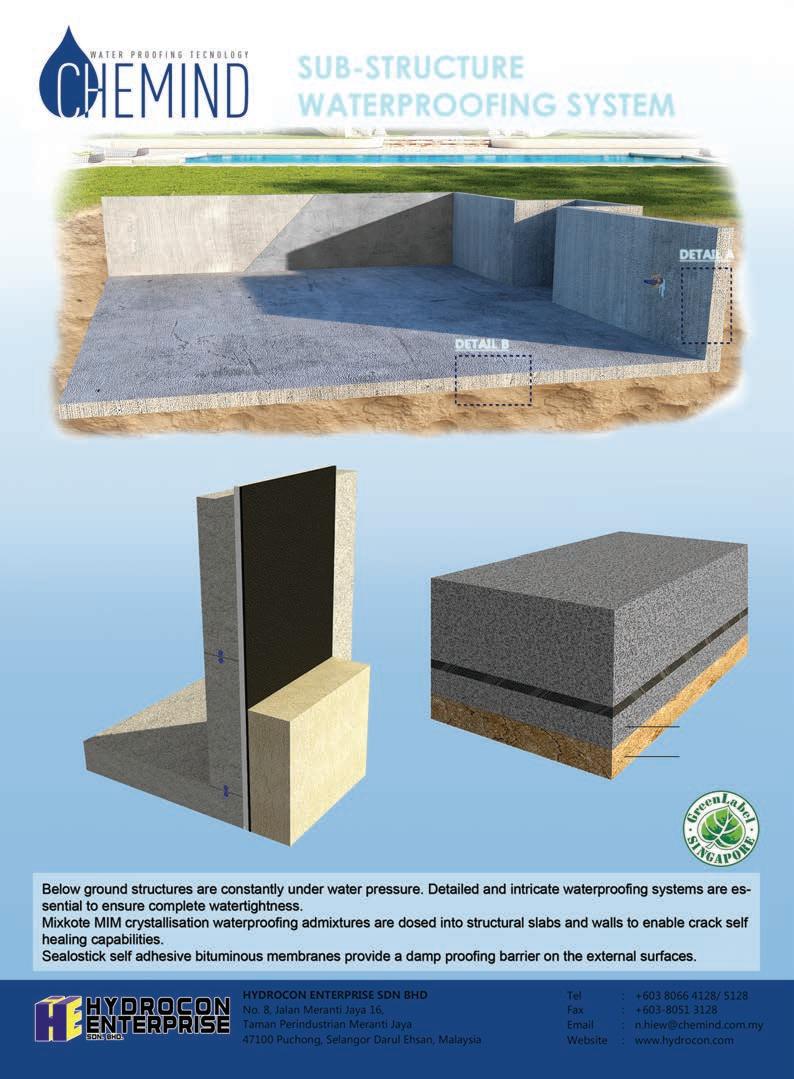



DIMENSION PUBLISHING SDN. BHD. (449732-T)
Level 18-01-03, PJX-HM Shah Tower, No. 16A, Persiaran Barat, 46050 Petaling Jaya, Selangor Darul Ehsan, Malaysia.
Tel: +(603) 7493 1049 Fax: +(603) 7493 1047
E-mail: info@dimensionpublishing.com Website: www.dimensionpublishing.com
Chairman
ROBERT MEBRUER
CEO/Publisher
PATRICK LEUNG
General Manager
SHIRLEY THAM shirley@dimensionpublishing.com
Head of Marketing & Business Development
JOSEPH HOW joseph@dimensionpublishing.com
Production Editor
TAN BEE HONG bee@dimensionpublishing.com
Contributing Writers
PUTRI ZANINA & ZOE PHOON putri@dimensionpublishing.com zoe@dimensionpublishing.com
Senior Graphic Designer
SUMATHI MANOKARAN sumathi@dimensionpublishing.com
Graphic Designer
NABEELA AHMAD beela@dimensionpublishing.com
Advertising Consultants
THAM CHOON KIT ckit@dimensionpublishing.com
Accounts cum Admin Executive
YEN YIN yenyin@dimensionpublishing.com
For advertisement placements and subscriptions, please contact:
DIMENSION PUBLISHING SDN. BHD. (449732-T)
Level 18-01-03, PJX-HM Shah Tower, No.16A, Persiaran Barat, 46050 Petaling Jaya, Selangor Darul Ehsan, Malaysia.
Tel: +(603) 7493 1049 Fax: +(603) 7493 1047
E-mail: info@dimensionpublishing.com
Subscription Department
E-mail: info@dimensionpublishing.com
Printed by
PERCETAKAN SKYLINE SDN BHD (135134-V)
No 35 - 37 Jalan 12/32B, TSI Business Industrial Park, Off Jalan Kepong, 52100 Kuala Lumpur.
Mailer
SR EXPRESS (M) SDN. BHD (227963-P)
No. 21 Jalan 2/27E, Seksyen 10 Wangsa Maju, 53300 Kuala Lumpur, Malaysia.
Tel: +(603) 4143 5787
JURUTERA MONTHLY CIRCULATION : 22,500 COPIES
Submission or placement of articles in JURUTERA could be made to the:Chief Editor
THE INSTITUTION OF ENGINEERS, MALAYSIA (IEM) Bangunan Ingenieur, Lots 60 & 62, Jalan 52/4, P.O. Box 223 (Jalan Sultan), 46720 Petaling Jaya, Selangor. Tel: +(603) 7968 4001/4002 Fax: +(603) 7957 7678 E-mail: pub@iem.org.my or sec@iem.org.my IEM Website: http://www.myiem.org.my
© 2018, The Institution of Engineers, Malaysia (IEM) and Dimension Publishing Sdn. Bhd.
PUBLICATION DISCLAIMER
The publication has been compiled by both IEM and Dimension with great care and they disclaim any duty to investigate any products, process, services, designs and the like which may be described in this publication. The appearance of any information in this publication does not necessarily constitute endorsement by IEM and Dimension. There is no guarantee that the information in this publication is free from errors. IEM and Dimension do not necessarily agree with the statement or the opinion expresssed in this publication.
COPYRIGHT
JURUTERA Bulletin of IEM is the official magazine of The Institution of Engineers, Malaysia (IEM) and is published by Dimension Publishing Sdn. Bhd. The Institution and the Publisher retain the copyright over all materials published in the magazine.
of
magazine
of

by Tan Zhi Howe Immediate Past Chairman, Young Engineers Section
stablished in 1970, Young Engineers Section (YES) comprises some 2/3 of members of IEM. Our vision is for young engineers to connect with engineers across borders as well as other professionals locally. Our mission is to Em POWER Graduates and Guiding Students (EGGS) as young engineers will soon be the pillar for the industry and growth of the nation.
In this month’s Cover Story, IEM’s Immediate Past President, Ir. Dr Tan Yean Chin, talks about his professional journey from a young engineer to the prominent geotechnical engineer that he is today. He also gives pointers on how young engineers can develop both soft and hard skills to face challenges.
In addition, there is an article on our recent Young Engineers Exchange to Taiwan. Members from our most active student section from Universiti Tun Hussein Onn Malaysia, have also penned their thoughts on running an engineering organisation while juggling their studies.
Last but not least, we hope that engineers who read this issue of JURUTERA will help empower each other as we look towards building a stronger IEM and a more developed nation.
Thank you.
by Ir. Razak Yakob Bulletin Editor

What a great month this will be! Apart from National Day on 31 August, 2018, this is also the month for Engineering Week which means the IEM calendar is full of activities.
Our Cover Story this month is on the future of our nation. Tan Zhi Howe will talk about this and more in his Cover Note.
Another exciting event is the start of the IEM Mobile Application Competition 2018 (#iemmac2018), which will run in 3 phases. Get together with your team and come up with the documentation for this competition. Great prizes await the winners. Details on our website.
The Log Book Training Scheme (LBTS) has now been rebranded to Engineering Competency Development (ECD), with more exciting enhancements and in-line with the current Professional Interview requirement which is competency focused. Find out more about it inside.
Lastly, hope to see all of you at the Engineer’s Run and other events lined up for Engineering Week 2018. And keep sending in articles; after all, this is a magazine for YOU, by YOU!
Let’s continue to engineer our country to greater heights!
Dear JURUTERA Readers,
Some of you may have received the May and June 2018 issues rather late. This was because we were in the midst of changing the mailing firm we had used for the last 30 years that had ceased operations since March 2018. Two firms are being evaluated at present, each on a 3-month term to enable us to review their performance.
We greatly appreciate your patience, over any hiccup during this time. If your hardcopy delivery is delayed, you can access the digital version of JURUTERA on IEM's website.
Thank you.
Editorial Board




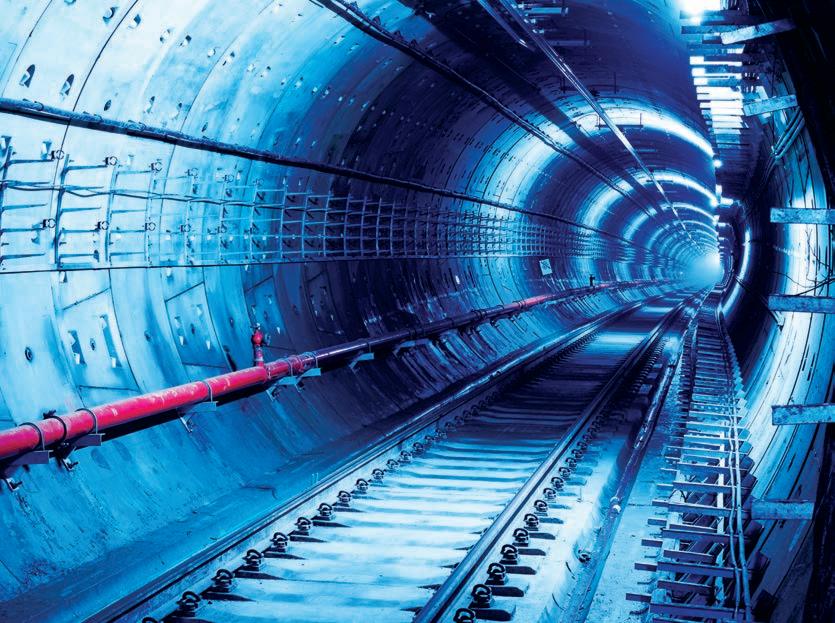



Ir. Dr Tan Yean Chin is founder and Senior Director of G&P Professionals, a group of multi-disciplines engineering consulting firms. He is the Immediate Past President of The Institution of Engineers, Malaysia (IEM) and Board member of the Board of Engineers, Malaysia (BEM).
Former IEM President Ir. Dr Tan Yean Chin has his heart and sight focused on the development of young engineers for the sustainability of IEM and the progress of the country’s engineering industry.
Passion
for his work, a positive mindset and a continuous desire for learning are what keeps Ir. Dr Tan Yean Chin highly spirited in his profession. He also finds much satisfaction in sharing his experiences and skills with others in the engineering fraternity, particularly young engineers.
Interestingly, when he became IEM President for a twoyear term which ended recently, his priorities included attracting young engineers to not only become members of IEM but also to serve and be involved in the policymaking of the almost six decades old institution. He had then envisioned IEM to include young engineers as members of the council, which would give them a platform to get their voices heard as well as to inject fresh and innovative ideas.
During his tenure, he succeeded in leading efforts to get IEM members to support and approve amendments to the IEM Constitution and By-Laws to allow five representatives from the Young Engineers Section (Y.E.S.) to sit on the IEM Council, thus enabling Student and Graduate Members/ Young Engineers to play a bigger and more important role in the institution.
“This is a landmark change in the IEM Constitution. For almost 60 years, only full IEM members were allowed to be on the council. I believe that now, by allowing five young graduates to be on the council, they can contribute to the policy making of the institution. This shows IEM is sensitive about its young members’ opinions and ideas and the need for them to contribute and serve IEM,” says Ir. Dr Tan, adding that their active participation will help ensure the sustainability and relevance of IEM in meeting the challenges of the future.
He considers the rejuvenation of IEM for its long-term sustainability to be an important agenda, and the greater involvement of the young group is one way to help achieve this purpose. With the involvement of the young, he says, IEM can derive fresh and innovative ideas to move the institution forward as well as meet future challenges.
“Sustaining and increasing membership, and staying relevant will ensure IEM thrives in the future. With new young leaders being groomed, they can continue with present efforts, such as maintaining current membership, attracting and recruiting more new members, providing better services to members and ensuring IEM stays relevant and influential in both the local and international engineering fraternities,” he says, adding that the young should be the main force in rejuvenating IEM for its sustainability. This will augur well with our new tagline, “IEM Reimagined”, so as to further advance the institution as one of Malaysia’s premier professional organisations.
IEM has more than 40,000 members, making it one of the largest professional organisations in the country. Graduate and Student Members represent 76% of the whole membership. Ir. Dr Tan says it is also important for IEM
to expand its membership base, which is now dominated by those in the conventional engineering fields such as electrical, mechanical and civil. He emphasises that IEM must also attract engineers from new fields because in doing so, IEM can further evolve and continue to remain relevant.
“We have also proposed encouraging the incorporation of others involved in the engineering field, such as technologists and technicians, into IEM. We want to promote inclusiveness within IEM, which should represent not only engineers but also those working in all fields related to engineering,” he says.
Ir. Dr Tan started getting involved in IEM activities at a young age and feels that he has benefitted greatly from this. “I encourage aspiring engineers and young engineers to do the same. I joined IEM in 1994 at the age of 26. The Y.E.S. Section helped me progress in the engineering field. At the time, it was known as the Graduate Student Section,” he says. “Through it, I met many engineers. We shared and learnt from one another. Y.E.S. is an important platform for young engineers to come up in the industry. IEM is not only for learning technical skills; more importantly, it is a platform for networking. Not many are aware of this. Actually it is the networking that can help you achieve success. For young engineers, it helps in enhancing human skills, and getting more competent in preparing and making presentations. I encourage graduate engineers to join Y.E.S. as it will help in their career development.”
Recalling his early days with IEM, Ir. Dr Tan says he joined as a Graduate Student member and then moved on to be a Corporate member, joining the Engineering Technical Division of IEM. He was Chairman of the Geotechnical Engineering Technical Division for 2004/2006 and at the age of 48 in 2016, he became IEM President.
One year later, he obtained his doctorate degree in engineering, attesting to his quest for continuous learning. He says he has also learnt a lot from IEM, particularly in the areas of human relations, organisational skills and volunteerism.
Ir. Dr Tan says the dedication of volunteer members is a key reason for the success of IEM. Volunteers work together as a team, sharing their skills and sacrificing their time to work for the benefit of its members. It is important, he feels, to inculcate the spirit of volunteerism in young engineers who will be taking over the baton of the leadership of IEM to move it further in the future.
“The future will have its own challenges and young engineers can deal with these with a positive mindset and the right attitude. Another important attribute is to have passion in what you do. If you love your job, it is easier to face the challenges. You must also add value to whatever you do by enhancing skills, such as management skill, through continuous learning. This will add to your arsenal of weapons. If you don’t value add, you can’t improve,” says Ir. Dr Tan in advising engineers who aspire to feel happy about their career.
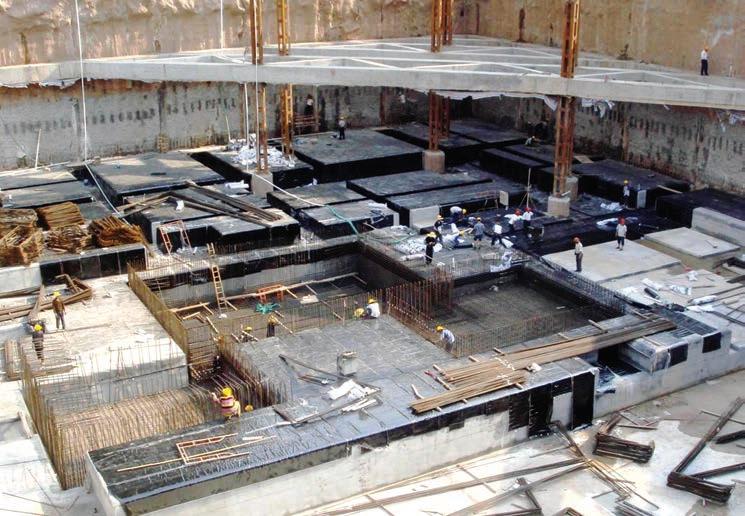


SikaBit® W-15 is a sheet membrane waterproofing system consisting of a cross laminated HDPE carrier film laminated with a modified bitumen based adhesive on both surfaces. Due to the double-sided structure the SikaBit® W-15 system can be installed single or (partially) double layered and does not require any accessories such as tapes and pastes etc.

He says it is also important to stay abreast of issues affecting the industry.
“Nothing beats reading. In the engineering fraternity, you must constantly update yourself by reading relevant publications as well as attend talks and seminars where you can exchange ideas, network, make friends and build a stronger network by volunteering your time and service.”
He says that his own success in the engineering field is also due to his willingness to share knowledge, know-how and experience. “People must be willing to do this; you will end up gaining more. Opportunities will knock at your door. When you are willing to share, it shows your positive attitude. It is the law of attraction; by being positive, you attract positive people,” says Ir. Dr Tan.
“Everybody has 24 hours in a day. Believe in focusing and having passion in your work. You can have work-life balance. Despite being busy, train yourself to be more efficient. Do things in a shorter time. One of the ways to become more efficient is to get help and complete tasks through teamwork. When you do things faster, you will find you have more time."
As for his ability to achieve balance in his life, Ir. Dr Tan attributes this to his family and his deep conviction in religion. “When work is done, I go home and spend time with my family. Weekends are family time. My wife sacrificed her career as a manager and gave up a lucrative job to be a full-time homemaker. We have two sons, both studying in university now. Family is important to me,” he says.
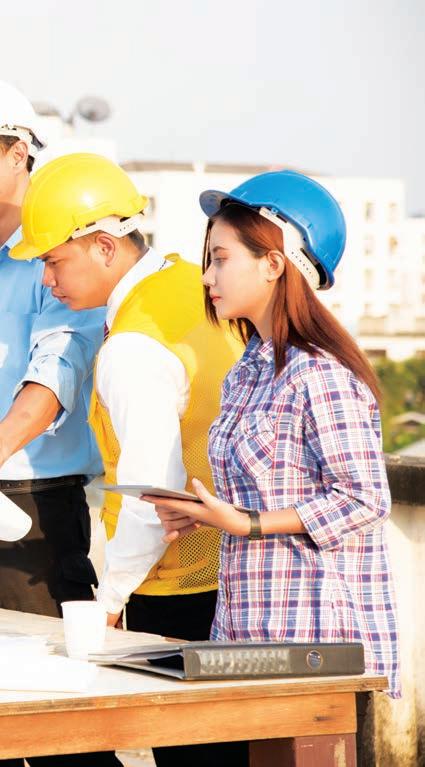
“I also find inner peace through religion. I am a Buddhist and meditation helps me achieve inner calm. Other than staying positive and passionate about my work, I have got through my worst of times through religious practices. These can help solve life challenges.
“Every job has its problems, such as difficulties in human interaction. I believe that the basis of every successful person is being honest and ethical. If you deviate, you will end in a downward spiral. Be honest and truthful in whatever you are working on. Don’t just think of making money. Think of learning as much as possible. In the long run, money will search for you. Do learn as much as possible. Don’t be calculative. A boss likes an employee who is hardworking and wants to learn more. The money will come eventually.”
The future will have its own challenges and young engineers can deal with these with a positive mindset and the right attitude. " "
Ir. Dr Tan says his own success habits hinge on punctuality. “Always complete tasks in a timely manner. Being punctual is a must. Don’t waste time on unnecessary things that will not contribute towards completing your tasks. This habit contributes to achieving efficiency, that is, by being focused in what you are doing. Do your best to complete tasks on time,” he says.
What makes an engineer successful and happy at the same time? To this question, Ir. Dr Tan says that success and happiness are a state of mind. “These do not depend on material things. Being regarded as trustworthy by colleagues and friends is important. When people trust you, it speaks volumes of you as a good engineer. You must also earn peer trust so that what you say will carry weight. And be good in what you do. To quantify your success through how much you earn is wrong. Try to enjoy the process that you go through to complete a certain task, whether it's technical challenges or human handling,” he says.
“As long as you try and enjoy the process and are able to answer to your inner self, you will find the inner peace for a continuous career. Some people give up because they cannot take the stress. Being successful is being able to enjoy the process of getting there. If you do that, your rate of success will be higher. Hang on to something deep, such as religion, to achieve inner peace and happiness. Helping people and developing universal values such as tolerance and kindness are also a way to happiness.”
As past president of IEM, Ir. Dr Tan hopes the new council members will continue with the nurturing of young engineers, make IEM a more relevant institution that represents the engineering industry and focus on the institution’s sustainability.
He is confident that IEM will continue to support Government efforts to further develop the nation. On the part of IEM, members have vast engineering know-how and resources as well as a sizeable pool of young and talented engineers who can offer technical advice and input to the Government and the industry at large.

JURUTERA has an estimated readership of 168,000 professionals. Our esteemed readership consists of certified engineers, decision making corporate leaders, CEOs, government officials, project directors, entrepreneurs, project consultants, engineering consulting firms and companies involved with engineering products and services.
Our business partners can be assured that their products and services will be given the circulation and exposure they deserve, thus maintaining a sustained advertising presence to our core readers of decision-making engineers and technical experts. Our website offers an even wider market reach, with added international presence, aided by our international affiliation with official engineering bodies all over the world. Our online and offline advertising features such as banner advertising, article sponsorship and direct e-mail announcements have proven to be successful marketing strategies that will set the businesses of our partners apart from their competition.
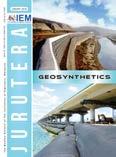


For advertising enquiries, please contact:
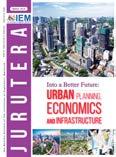

18 November 2017



The spirit of Tan Sri Prof. Chin Fung Kee lives on
Tan Sri Prof. Chin Fung Kee’s name invokes the memory of a person who embodied a value system very much respected by Malaysian engineers. It is synonymous with the following values:
• Dedication to one’s chosen career.
• Commitment to the assigned tasks in service of men.
• Belief in a meritocracy system.
Thus, it is no wonder that Tan Sri Prof. Chin is remembered as the country’s foremost engineering educator and an outstanding practising engineer. The 27th Annual Prof. Chin Memorial Lecture is a fitting occasion that recognised his contributions to our engineering industry and nation-building. See JURUTERA, November 2015, pages 25-28.
The speaker Ir. Dr Ooi Lean Hock
Ir. Dr Ooi Lean Hock graduated with a PhD from University of Sydney, Australia. He worked as a geotechnical consultant and a specialist contractor before joining MMC-GAMUDA in the SMART Tunnel project. He is currently the lead geotechnical engineer in the Design and Technical Department of MMC-GAMUDA KVMRT (T) Sdn. Bhd. for the second line of Klang Valley Mass Rapid Transit namely the Sg. Buloh Serdang PutraJaya (SSP) line. He has extensive experience in ground treatment works, more recently in deep excavation and tunnelling works. He also has a keen interest in geotechnical instrumentation and testing. He has been involved in many interesting infrastructural projects such as railways, runways, highways, tunnels and hydropower both locally and abroad.
Note:

The title “Underground MRT in Kuala Lumpur: The Inevitable Urban Transit Solution” is taken from Ir. Dr Ooi Lean Hock’s lecture. In this report, the more suitable title is “A Liveable City: Enabled by Underground connectivities”.
Traffic congestion is defined as the result of too many cars on roads which have reached the maximum vehicle capacity. As any office worker in Kuala Lumpur will testify, traffic congestion is the cause of much misery as a person will, on average, spend 34% extra travel time in the morning rush hour to get to the office; he will need 56% extra travel time and another 80% extra travel time in the evening rush hour [1]. Computing the total loss of productive time, this translates to a whopping extra 41 minutes travel time per day to him or an extra 158 hours travel time per year, according to the same report.
In the World Bank report survey conducted in 2014, Jensen and Reimann (2015) found that only 17% of Kuala Lumpur commuters used public transport. This figure compared unfavorably with 62% in Singapore, and 89% in Hong Kong [2]. In all, the report found that
Greater Kuala Lumpur commuters wasted 250 million hours a year in traffic jams. In economic terms, this was a loss of RM54 million a day as a result of unproductive hours. However, the main culprit of Kuala Lumpur’s traffic congestion could be the laissez faire manner in
which the city authority managed urban transportation planning. A kmal S. Abdelfatah et al., (2015) noted that private car ownership increased from 5.5 million in 2003 to over 10 million in 2012, an exponential 81.8% growth in just 9 years [3].
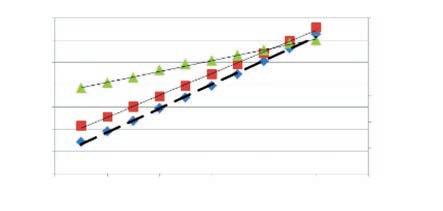
See Figure 1. Put differently, the increase of private cars per year was 500,000, compared to a paltry increase of just 2,000 buses per year. So the menace of traffic congestion is well understood. What is not is the magnitude of the need to change our behaviour with respect to overcoming the traffic congestion in Kuala Lumpur. As an example, after Uber commissioned Boston Consulting Group (BCG) on how to mitigate traffic congestion in 2017, it discovered that the current
5.8 million cars in Kuala Lumpur were way beyond the carrying capacity of the city roads; 40% of the cars must be replaced by alternative transport options [4].
In this short article, instead of reporting Ir. Dr Ooi Lean Hock’s lecture verbatim (it will be reported in full in IEM Journal later), we seek out the motivations behind the construction of the MRT1 and MRT2 Lines. We raise three questions: First, what is considered a liveable city (assuming that the traffic congestion
is brought under control)? Second, how would urban transit solve the traffic congestion woes? Third, why do we go underground in Kuala Lumpur, and what are the major geological challenges of deep excavation and tunnelling related to mitigating traffic congestion — as we learnt from Ir. Dr Ooi’s lecture?
In his lecture delivered on 18 November, 2017, Ir. Dr Ooi pointed out that an integrated public transportation system was key to achieving 50% public transport ridership by 2020, without which the ideal state of a liveable Greater Kuala Lumpur would remain a distant dream. In this section, we shall focus on two issues: The concept of a “liveable city” and the emergence of an acceptable framework used to measure the level of a smart city.
Concept of Liveable City: The concept of liveability first appeared in the 1950s. In the literature review, an accepted definition of a liveable city should include 6 broad principles:













Provide more transportation choices, promote equitable and affordable housing, enhance economic competitiveness, support existing communities, coordinate and leverage federal policies and investment as well as value communities and neighbourhoods [5]. By and large, transportation is the most important in determining whether a city is liveable. The next crucial principles are the wellbeing of the communities from housing to economy. As we shall see later, many of these principles are similar to frameworks used to categorise smart cities except in ICT (information communications technology) provision.
Acceptable framework for assessing a smart city. Chourabi, Nam and Walker (2012) proposed a framework for a smart city after exhaustive studies [6]. See Figure 2. In the diagram, smart city initiatives are driven by people, policy and ICT. The emphasis appears to be on ICT. However, what appears to be missing is urban transit, or for that matter, transportation planning.
A refinement on this model (as in Figure 2) was made by Albino, Berardi and Dougelico (2015) who cited research findings by Lombardi et al., (2012) and identified 5 components suitable for the study of a smart city: Smart economy, smart people, smart government, smart environment and smart living. One
additional component was added: Smart mobility. Therefore, from this point onwards, mobility is also key in the definition of a smart city [7]. The said framework recognises the multi-faceted nature of a smart city to include the quality of people, communities and ICT provision.
Monzon (2015) created a method of assessment to compare and contrast two sets of cities: The welldeveloped North Mediterranean cities and the developing South and East Mediterranean cities [8]. The researcher accepted the framework of Albino, Berardi and Dougelico (2015), but further refined it by operationalising the model in connecting both city sets through the variables as shown in Figure 3. In
addition, in this model, infrastructure was identified as the central piece, technology the enabler, and through integration of infrastructure and technology, an assessment of a smart city was made possible.
If mobility is paramount to the success of a smart city, urban rapid transit should then be seen as a means to alleviate traffic congestion in the Greater Kuala Lumpur, as explained in the next section.
In this section our task is to collect empirical evidence from the relevant literature: First, the car-based system as applied to the Greater Kuala Lumpur, and second, the expected outcome in adopting a transit-based system. Evidence of car-based system. There is a rich source of literature leading up to the current carbased system. In particular, Barter (2000, 2004) labelled Kuala Lumpur Metropolitan Area (KLMA) as moderately traffic saturated compared to other Asian cities such as Bangkok and Manila, but moving close to car-dependence [9, 10]. He attributed this condition to institutional arrangements that encouraged carownership.
In Table 1, if we focus on comparing the column HIA (higher-income Asian cities such as Hong Kong and Singapore) with the column Klang Valley, the income disparity between the two is very great (US$34,797 and
Table1: Transport system and land use characteristics in the Klang Valley compared with middleincome and high-income groupings of cities, circa 1995
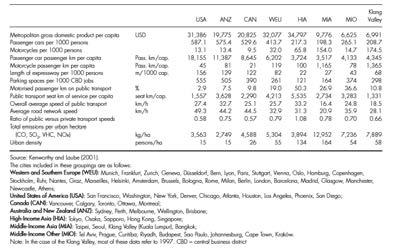
Source: P. A. Barter (2004)
SAVING HOLISTIC APPROACH TO ENVIRONMENTAL ISSUES
SCARCITY
GROWTH

MANAGEMENT URBAN SPRAWL
CHANGE EFFECTS
SCARCITY OF RESOURCES CLIMATE CHANGE EFFECTS
PROLIFERATION
SECURITY HEALTH PROBLEMS SAFETY AND SECURITY
VIOLENCE AND INSECURITY
THREATS TO CULTURAL IDENTITY
POPULATION
EDUCATIONAL LEVEL URBAN POVERTY AND INEQUALITY GAP BETWEEEN GOVERNMENT AND GOVERNED
COHESION
URBAN YOUTH PROBLEMS
LACK OF PUBLIC TRANSPORT
CONGESTION
INFRASTRUCTURES DEFICIT
LIMITED URBAN BASED INDUSTRIES
INFRASTRUCTURES DEFICIT SUSTAINABLE
INSTABILITY IN GOVERNANCE
LOW URBAN INSTITUTIONAL CAPACITIES
UNBALANCED GEOGRAPHICAL DEVELOPMENT
SHORTAGE IN ACCESS TO TECHNOLOGY
AFFORDABLE HOUSING UNEMPLOYMENT SHRINKING CITIES
DIVERSITY SOURCE OF INNOVATION
US$6,991 respectively). Yet, in terms of passenger cars per 1,000 persons, the difference is very small (217 cars and 208 cars). Another comparison is the public transport seat km of service per capita (5,535 and 1,331 respectively); the Klang Valley provides much less. Notice the average network speed for both HIA and Klang Valley (31.3 km per hour and 28.1 km per hour respectively); the difference is slight which indicates that Klang Valley traffic has not come to a standstill yet. So, though the Klang Valley is cardependent, it has not reached traffic saturation yet.
FLEXIBLE GOVERNANCE FORMAL + INFORMAL GOVERNMENT
ECONOMY WEAKNESS AND LACK OF COMPETITIVENESS
ECONOMIES TERRITORIAL COHESION
ECONOMY
Figure 3: Relations between smart city dimensions, South & East Mediterranean challenges and general city challenges. Source: A. Monzon (2015) the benefits are numerous, according to the American Public Transportation Association (2018). There is no wasting of time, no delay for appointment, no wasting of fuel and less air pollution/carbon dioxide emission, less car maintenance costs, less incidents of road rage, less spillover to other roads and less chance of collision on the roads [11].
Benefits of transit-based system. The opposite of traffic congestion is seamless flow of traffic through adopting an urban transit system. By eliminating traffic congestion,
Diaz and Mclean (1999) conducted a survey of 12 transit agencies which studied how transit developments affected property value [12]. Two major benefits were noted: Transit investment allowed better accessibility to other parts of a region from stations and more land spaces were opened up though these were previously not
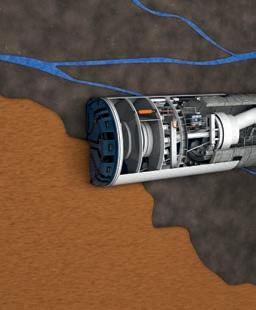


accessible and deemed unattractive. The quantum of increased property value in each case can be attributed to function of accessibility to employment, pedestrian accessibility, market penetration and development impacts. As argued by Mohammad et al., (2013), implementing transit agencies should be careful to plan the alignment of their routes, and locations of the station in order to attract more commuters [13]. Another rail transit study undertaken for Shanghai, Pan and Zhang (2008) provided empirical evidence that supported classical land economic theories that with better accessibility, “higher development intensity and more capital–intensive land use occurs near the transit stations” [14].
In the next section we learnt from Ir. Dr Ooi’s lecture that consultants/ contractors met various geological challenges in the course of building an urban transit system in Kuala Lumpur.
What are the unique challenges of Kuala Lumpur’s geology, in particular the infamous KL Limestone Formation? “The construction of each underground structure/tunnel is a remarkable adventure, as it must be driven in a particular site featuring a rock mass in no way similar to any another,” said Ir. Dr Ooi.
“The features encountered in KL Limestone Formation included but were not limited to the highly erratic rock head, highly developed fissures and intricate three dimensional network of solution channels littered with ubiquitous cavities, vertical cliffs, overhangs, and were consistent with Extreme Karst classification” according to Waltham & Fookes [15]. This karstic feature posed many problems to tunnelling as well as the design and construction of deep underground retention structures and therefore was rightly classified as potentially high risk.
Ooi and Ha [16, 17] summarised the challenges of tunnelling and
deep excavation works in KL karsts. Key challenges included the difficulties in accurately defining the bedrock profile as well as the sizes, trends and depth of cavities and solution channels. The consequential impact of any groundwater flow and potential loss of material (sinkhole) through solution channels in karst could have far-reaching consequences, even up to great distances when the delicate balance of the in-situ groundwater condition was compromised [17].
Klados et al., [18] shared experiences in managing tunnelling challenges through the KL Karst Formation using the Variable Density Tunnel Boring Machine (VD TBM), a first-of-its-kind in the tunnelling industry. The VD TBM was conceptualised by Malaysian MMC-Gamuda JV through exhaustive research and collaboration with TBM supplier Herrenknecht AG and Ruhr-University.
The completion of the MRT1 line not only transformed KL’s underground but also the heart of Malaysia. It would be remiss to not highlight the importance of the role of MRT in Kuala Lumpur’s continuing evolution into a liveable, world-class city in the future. It has changed the landscape of underground transportation significantly with the least social and environmental impacts while maintaining the current “cityscape”.
In trying to understand the motivations behind constructing the MRT1 and MRT2 lines, this article answered the three questions. First, an established liveable city is one that meets the mobility needs of its residents. Second, the urban transit system is the only means to overcome traffic congestion as we have learnt from the experiences of Singapore and Hong Kong. Third, by going underground to build the transit stations and the requisite tunnelling, consultants/ contractors faced unique challenges in the KL Limestone Formation, which were eventually resolved using VD TBM.
[1] https://www.tomtom.com/en_gb/ trafficindex/city/kuala-lumpur
[2] Jensen and Reimann (2015), Traffic jams cost us billions. https://www.star2.com/ living/living-environment/2015/12/12/ traffic-jams-cost-us-billions/
[3] Akmal S. Abdelfatah et al., (2015), Evaluating the sustainability of traffic growth in Malaysia. http://www.jtle.net/ [4] Bernama (2017), Ridesharing reduces traffic congestion. https://www.nst. com.my/news/nation/2017/11/301355/ ridesharing-reduces-traffic-congestion
[5] T. Herrman and R. Lewis (2015), What is livability? https://sci.uoregon.edu/sites/ sci1.uoregon.edu/files/sub_1_-_what_ is_livability_lit_review.pdf
[6] H. Chourabi, T. Nam and S. Walker (2012), Understanding smart cities: An integrative framework. https:// www.researchgate.net/profile/Sehl_ Mellouli/publication/278658877_ Lecture_Notes_in_Computer_Science/ links/5584184108aefa35fe338466.pdf
[7] V. Albino, U Berardi, and RM Dangelico (2015), Smart cities: Definitions, dimensions, performance and initiatives, https://s3.amazonaws.com/ academia.edu.documents/43205429/ Smart_Cities_Definitions_Dimensions_ Perf20160229-8993-7t1v56.pdf?A WSAccessKeyId=AKIAIWOWYY GZ2Y53UL3A&Expires=1519117 961&Signature=V3Jsn8QgbkiFLe BNE5U83lKpj5A%3D&responsecontent-disposition=inline%3B%20 filename%3DSmart_Cities_Definitions_ Dimensions_Perf.pdf
[8] A. Morgan (2015), Smart cities concept and challenges: Bases for assessment of smart city projects. http://ieeexplore.ieee.org/stamp/stamp. jsp?arnumber=7297938
[9] P. A . Barter (2000), Urban transport in Asia: Problems and prospects for high density cities, https://www. researchgate.net/profile/Paul_Barter/ publication/251388353_Urban_ Transport_in_Asia_Problems_and_ prospects_for_high-density_cities1/ links/0deec5389890e453cd000000.pdf
[10] P. A. Barter (2004), Transport, urban structure and ‘lock-in’ in the Kuala Lumpur Metropolitan Area, http:// lkyspp2.nus.edu.sg/wp-content/ uploads/2013/04/Barter-Lockin-in-KLIDPR-paper.pdf
[11] http://www.apta.com/mediacenter/ ptbenefits/Pages/default.aspx
[12] R. B Diaz and V. A Mclean (1999), Impacts of rail transit on property value, http://www.rtd-fastracks.com/media/ uploads/nm/impacts_of_rail_transif_on_ property_values.pdf,
[13] S. I Mohammad et al., (2013), A metaanalysis of the impact of rail projects on land and property values, https:// s3.amazonaws.com/academia. edu.documents/42962272/A_MetaAnalysis_of_the_Impact_of_Rail_ Pr20160222-10604-h2lari.pdf?AW SAccessKeyId=AKIAIWOWYYGZ 2Y53UL3A&Expires=1519190117 &Signature=fvO%2BRgE4Lq5J5d gd4eZ0wF1t4Uc%3D&responsecontent-disposition=inline%3B%20filename%3DA_meta-analysis_of_the_ impact_of_rail_pr.pdf.
[14] H. Pan and M. Zhang (2008), Rail Transit Impacts on Land Use: Evidence from Shanghai, China, http://trrjournalonline. trb.org/doi/abs/10.3141/2048-03.
[15] A.C. Waltham and P.G. Fookes (2003), Some engineering classification of karst ground conditions, Quarterly Journal of Engineering Geology and Hydrogeolgy, 36.
[16] L.H. Ooi and T.T. Ha (2016), The challenges of tunneling works in Kuala Lumpur karst, Proc. of the 19th SEAGC & 2nd AGSSEA Conference, Kuala Lumpur, pp. 1151-1158.
[17] L.H. Ooi and T.T. Ha (2016), Deep excavations works in in Kuala Lumpur karst – some considerations, Proc. of the 19th SEAGC & 2nd AGSSEA Conference, Kuala Lumpur, pp. 83-90.
[18] G. Klados, H.W. Ng, G.C.Y. Wong and J.H.H. Chin (2015), Managing tunneling challenges through Kuala Lumpur karst formation using variable density TBMs, Proc. of Int. Conf. and Exh. On Tunneling and Underground Space (ICETUS 2015), Kuala Lumpur, pp. 186191
Authors' Biodata
Ir. Dr Wang Hong Kok is the Principal Lecturer of Tunku Abdul Rahman University College since 2014. He is an IEM Council Member, Honorary Treasurer (2016-2018), Founding Chairman of Urban Engineering Development Special Interest Group (UEDSIG), Founding Chairman of Tan Sri Yusuff Final Year Project Competition Committee. He is also a member of IEM JURUTERA Editorial Board.
Ir. Dr Ooi Teik Aun Hon. FiEM, FICE graduated with BE and ME from Auckland University and PhD from Sheffield University. He was Superintendent of Research and Laboratory while in JKR. He is founder Chairman of TUSTD, Organising Chairman WTC2020, Deputy Chairman TUSTD, Director of TAO Consult, Director of IEMTC and IEM Academy.
Ir. Khoo Chee Min works as Assistant General Manager in Mass Rapid Transit Corporation and is currently serving as Chairman of IEM Tunnelling and Underground Space Technical Division (TUSTD) and Deputy Organising Chairman of World Tunnel Congress (WTC) 2020.






The IEM Employment Survey was conducted at the end of 2017 with a cut-off date, 31 January, 2018. The objective was to obtain information pertaining to the employment situation, remuneration and job satisfaction of engineers. The survey was under the charge of the Standing Committee on Welfare & Service Matters, with the collaboration of the Young Engineers Section. A total of 1,061 online surveys was completed from December 2017 to January 2018.

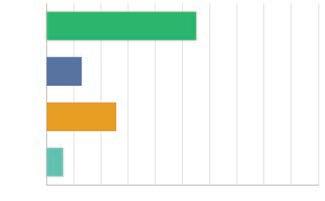

Of the 16,000 online surveys emailed to IEM members, 1,016 responses were received by 31 January, 2018. The respondents comprised 18.28% female and 81.72% male. As shown in Figure 1, the majority were Graduate Members (46.09%), followed by Corporate Member (40.15%) and non-members (7.35%).
For registration with the Board of Engineers Malaysia (Figure 2), results were recorded at 55.33% comprising mostly Graduate Engineers, 25.64% Professional Engineers with Practicing Certificate and 12.91% Professional Engineers.
The majority were aged 31-40 years (41.85%), followed by those aged 20-30 years (29.03%) and 41-50 years (16.21%). Next, the majority were fully employed (83.69%), followed by the self employed (8.48%) and those doing further studies (3.02%). For academic qualifications, the respondents comprised Bachelor Degree (69.93%), Masters (21.12%) and PhD (7.42%).
Figure 3 shows that the majority were in Civil Engineering (43.10%), Mechanical Engineering (21.41%), Electrical Engineering (21.12%), Chemical Engineering (6.37%) and others (7.99%).
Based on the survey, the majority were local graduates (76.59%). The number of overseas graduates stood at 21.79%, followed by graduates from twinning degrees (1.62%).The majority (91.53%) agreed that engineering was their choice of career.
Of the respondents, 95.97% were working in Malaysia and 4.03% working overseas. Of these, 76.33% were in the private sector, 13.75% with the Malaysian government and 9.92% in government-linked companies or agencies (Figure 4). Of the 1,061 respondents, the majority were Engineers (35.17%), followed by Senior Engineers (23.38%), Directors (12.28%) and Managers (10.90%).
Most of the respondents (Figure 5) considered themself Professionals (30.84%), Management (25.15%) and Executives (19.84%). Their job nature (Figure 6) were Engineering/ Technical (39.39%), Consultancy (34.87%), Education/Training (9.14%) and Management (6.78%).
The majority spent 1-6 months After Graduation to secure a job (61.10%), followed by Before Graduation (31.14%), 7-12 months After Graduation (4.42%) and more than 1 year After Graduation (3.34%).
In addition, 25.05% had 1-5 years working experience, 22.79% with 6-10 years, 20.92% with more than 20 years and 20.14% with 11-15 years.
The online survey reported that most respondents worked in one company after graduation (24.85%). This was followed by working in 2 companies (24.17%), 3 companies (21.81%), 4 companies (13.56%) and 5 companies (15.62%).
Most respondents (Figure 7) worked in the Construction/Properties sector (39.19%), followed by Oil & Gas (14.44%), Utility & Services (11.69%) and University/Colleges (8.84%).
In the remuneration section, the survey reported basic salaries, allowances and bonuses for 2017. Overall (Figure 8), the majority of 12.59% reported receiving salaries of RM4,001-RM5,000 per month, 12.29% received RM3,001-RM4,000 per month, 9.97% received RM5,001RM6,000 per month and 9.06% received more than RM20,000 per month.
Allowances (Figure 9): 32.4% of respondents reported they did not receive an allowance in 2017, 37.26% received less than RM1,000 allowance and 1.31% received











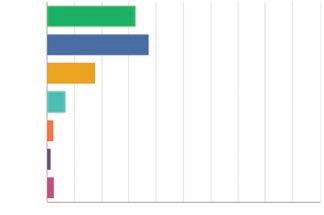
allowances of between RM4,001RM5,000 per month.
Bonuses (Figure 10): 34.04% indicated that they received one month bonus at the time of the survey, 29.31% did not receive any bonus and 3.73% received more than five months bonus.
The majority (48.24%) reported that their current salary was not reasonable, 33.53% felt their current salary was reasonable and 18.23% were unsure.
As shown in Figure 11, 66.97% worked 40-45 hours per week, 15.51% worked 46-49 hours per week and 5.74% worked more than 59 hours per week.
For the weekly overtime hours (Figure 12), 33.23% reported that they did not work overtime while 29% were required to work 1-5 hours of overtime per week and 4.83% reported working over 20 hours of overtime per week. The majority (84.96%) reported that there was no payment for their overtime work.
Finally, the online survey was to help understand the respondents’ job satisfaction, encouragement to attain Professional Engineers’ status and to move away from engineering.
Overall, 45.59% of respondents reported that they were satisfied with their current jobs and 8.71% reported that they were very satisfied. However, 10.03% indicated that they were dissatisfied with their current jobs and 2.94% were very dissatisfied with their current jobs.
65.96% reported they would work to attain the professional engineer status and 34.04% said they would not apply to become professional engineers.
As for the intention to move away from engineering,73.56% reported that they would remain in an engineering career and 26.44% reported that they would definitely move away from engineering as a career.
Authors' Biodata
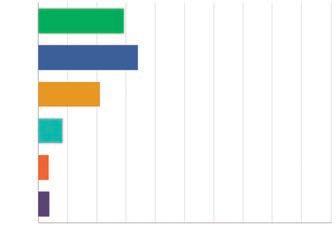


Title: Pre AGM Talk & 5th Women Engineers Section AGM
18 August 2018
:
: 9.00 a.m. - 1.00 p.m.
: 4
Title: Pre AGM Talk & 14th Project Management Technical Division AGM
18 August 2018
Organised by : Project Management Technical Division
: 9.00 a.m. - 1.00 p.m. CPD/PDP : 2
Title: 1-Day Course on Road Safety Audit (RSA) & Traffic Management Plan (TMP)
27 August 2018
Organised by : Highway & Transportation Engineering Technical Division Time : 8.30 a.m. - 5.00 p.m.
: 6.5
Title: 1-Day Course on Audit of a Junction Design & the Traffic Management Plan (TMP)
28 August 2018
Organised by : Highway & Transportation Engineering Technical Division
Time : 8.30 a.m. - 5.00 p.m.
CPD/PDP : 6.5
Title: 1-Day Course on Traffic Impact Assessment (TIA), Transport Assessment & Traffic Site Plan
29 August 2018
Organised by : Highway & Transportation Engineering Technical Division
Time : 8.30 a.m. - 5.00 p.m.
CPD/PDP : 7
Kindly note that the scheduled events are subject to change. Please visit the IEM website at www. myiem.org.my for more information on the upcoming events.
Author: Engineering Competency Development Committee (formerly known as Log Book Training Scheme Sub-Committee)
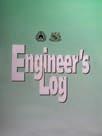
In 1982, IEM initiated the Log Book Training Scheme (LBTS) programme to assist Graduate Members obtain their professional engineer qualification. The objective was to support graduate members in organisations which did not have a professional engineer with the same engineering discipline to act as mentor or supervising professional engineer.
It is with this very core essence of its establishment and to support the change of professional engineer interview from outcome based to competency-based assessment that IEM has rebranded LBTS to Engineering Competency Development (ECD).
Since its inception, many graduate members have benefitted from this programme. IEM shall continue to provide this service to graduate members with enhancements (the objectives of this rebranding exercise) to cater to changes in the IEM Professional Interview assessment format, the younger generation and advancements in the industry.
In this rebranding exercise, we concentrate on five elements: Database, Survey, Name, Engagement and Appreciation.
Firstly, membership to the ECD programme is not automatic. Neither was the LBTS. However, as the years went by, the programme accumulated a very long list of mentors and mentees, whether they were active or not. The list became meaningless and using manual tracking made it too complex and time consuming to utilise or maintain.
To streamline this issue, database clean-up was required. An invitation email/letter was sent out in December, 2017, to all mentors and mentees listed in the database. The objective was to update and confirm interest of each mentor and mentee to be maintained in the programme. Their replies were tabulated.
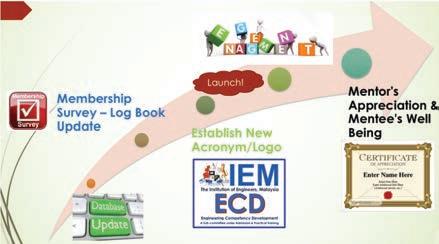
Elements of LBTS rebranding
Enrolling in the programme is voluntary since a graduate member can take other routes to become a professional engineer. We believe in concentrating our efforts and energy of our resources on graduate members who are serious about progressing in their professional careers. We volunteer because we believe in nurturing the engineering industry and this should be appreciated by the participants. The database clean-up exercise reduced the list of participants by more than half. The list of mentors and mentees will be listed in the ECD section for the reference of members.
Secondly, we conducted a survey of all the members in the old database with the objective to improve LBTS effectiveness for the candidates pursuing Professional Engineer Certification, to make
LBTS more effective for the mentor in helping their mentees and to collect information on areas of improvement that need to be considered during LBTS rebranding. The survey was conducted on the “survey monkey” platform from 5 January to 5 February, 2018. It was divided into 3 categories: Demographic Information, Engineer’s Log and Overall Scheme.
The response was not encouraging but those concerned over the wellbeing of the LBTS programme, managed to voice out their opinions. One of the most important findings was that all respondents thought the programme was beneficial and relevant to their organisations and their career development. This was important to know because, if this programme was deemed irrelevant, it should be scrapped.
Another major finding was that LBTS needed to be made online and paperless. This was actually the approach the committee felt strongly about, moving forward. However, such interface would require a major information technology setup which would mean high financial investment. The committee agreed that the project should be conducted over a longer period of time in multi-stages to go along with the upgrading of IT infrastructure at IEM.
We shall update the progress in upcoming articles. Other findings relating to the improvement process are in the process of implementation or will be reviewed and implemented in the near future.
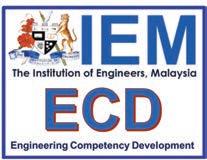
Thirdly, to be current with the industry and in-line with the changes in IEM, a new name was deemed necessary. The IEM PI assessment format was enhanced to competency based with the last batch of PI applicant registered by 31 December, 2017. So, a “competency” based assessment need to be supported with mentorship that focused on competency based as well. This was where LBTS needed to be enhanced. The competency was not about focusing on traits of engineers personally but rather their engineering capabilities. This programme may also be expanded to include potential members from backgrounds such as technicians and technologists, once the organisation has designed the career development path of these groups of members.
A new logo was introduced, together with the new name “Engineering Competency Development” (instead of “Log Book Training Scheme”), as part of the marketing impact for brand recognition.
The fourth element in this rebranding exercise is engagement. We believe that all programme participants need support from the IEM secretariat and committee members. With this in mind, we will bring in more mentor and mentee support sessions to continue to brief and refresh participants about the programme, update new features (if any), and answer queries from members. The committee shall also start monitoring such sessions at the branch level and provide support as required. In 2017, the committee started the initiative of training trainers for branch representatives to conduct such briefings at their respective locations.
The “train the trainer” programme was implemented to reach out to more qualified mentors, especially to cater to the needs of branches outside the Klang Valley (HQ). This will make the programme more effective in serving mentees at their respective regions. In addition, the trainers can also organise mentor-mentee engagement sessions to support more graduate members requiring mentors to pursue the professional certification. The committee will continue to provide such support and seek cooperation from all to engage the secretariat incharge and the committee for any assistance required.
The last element is recognition for mentee and mentor. For the mentees, we encourage giving feedback on their mentors, introducing a mentor recognition programme and social media engagement. We encourage feedback on the mentors, be it positive or requiring improvements. Feedback is important to monitor the suitability of a mentor and a mentee. This is a 3-year relationship during which both parties will need to connect with each other professionally. Should the match between a mentor and mentee not be achieved, then we should find alternatives. Mentor recognition is also another way for mentees to provide the best feedback on their mentors. We have heard many stories of the admiration mentees have for their mentors and we would like to make these stories known. Do not hide your
admiration but instead recognise the efforts of your mentor.
When social media engagement started a few years ago on Facebook, many graduate members preferred this method of reaching out for assistance. We shall streamline and promote more such social media presence.
As for mentors, we shall maintain the list of mentors on the website as part of an elite group of people who has reached a certain level of ability to be a mentor in the industry, appreciation letters and a mentor recognition programme. These are members who are able and willing to altruistically help others to be as successful as they are.
When a mentee becomes a corporate member, the mentor will receive an appreciation letter signed by the IEM President. We believe a mentee’s success is also that of the mentor’s. Another form of recognition for mentors is the annual “Top 5 Mentors”. Based on the feedback from mentees, these 5 mentors will be given recognition at an official IEM event.
For now, these are the elements of our rebranding effort. The Committee would like to thank all survey participants for providing ideas on how they would like to see the programme sail in the IEM organisation, how to make it relevant in the industry and how to engage with the participants.
We will provide updates, from time to time, on the progress of the ECD programme. This is part of our engagement efforts for all members. We must remember that all the committee members and mentors in this programme are volunteers who are passionate about helping the younger generation achieve career development satisfaction with professional certification.
Contributing our personal time and sharing our knowledge and experiences are done in the hope that our contributions will translate into the development of Malaysia and bring the country to greater heights. Therefore, instead of criticism, let us think of how the programme can be made better. We will certainly appreciate help in any way possible. Let us all work together.


STEM (Science, Technology, Engineering & Mathematics) is becoming increasingly important and today, the application of science and technology is the norm in our daily lives.
Technology continuously invades every aspect of our lives, from smartphones to the development of electric cars and finding solutions to global warming. Indeed, STEM plays a major role in the world, with the result that most careers now require a background in STEM education.
Indirectly, STEM influences the economic growth of a country and today, it has become one of the competitive areas that determines a nation’s future.
Because of this, the Malaysian government has taken great effort to promote STEM. In 1970, it was our national policy to achieve a 60:40 ratio of Science stream to the Technical Arts stream but we have fallen well short of the target since its implementation.
Recent data showed that only 45% of students in secondary schools chose Science subjects over Technical Arts and that 15% who met the requirements to pursue Science, did not do so. Some of the factors leading to the decline in interest in STEM are limited awareness about STEM, perceived difficulty of STEM subjects and content-heavy curriculum.
Young engineers play a very important role in promoting STEM. As a new task force in the industry, they can contribute to the betterment of society. Through experience sharing sessions, they can offer school students a first taste of the industry and so motivate them to take up STEM-related studies. Young engineers should also able to communicate with and understand school students better as they themselves have left

school not too long ago. As a result, school students will look to them as role models when they pursue a career in the STEM field.
Hands-on activities will allow school students to have STEM experiences that are more fun and engaging. These activities also facilitate the development of necessary skills for younger school students. For Engineering Week, the Young Engineers Section (YES) has organised the annual model building competition as one of its initiatives to increase the interest in STEM among school students. For the competition, the students need to be able to think critically and creatively when tasked with building a specific model from a set of materials.
YES has also helped to set up engineering clubs in schools to inspire students who, at the same time, will be able to see the importance and excitement of engineering as a career. Through extra-curriculum activities, students will be able to learn design, technology and engineering more effectively than through textbooks. Allowing students to get a feel of engineering at such a young age will definitely mould their minds and hearts as well as ignite their passion for engineering.
Then there is the perception that STEM is difficult to study. To change this perception, events such as the Kuala Lumpur Engineering & Science Fair (KLESF) can help create greater awareness and knowledge of STEM.
KLESF, a STEM event co-organised by IEM, attracts tens of thousands of visitors annually. YES supports the event as KLESF is a great platform to raise the awareness of STEM among primary and secondary school students. To encourage students to explore STEM, members of YES organised a hands-on learning game
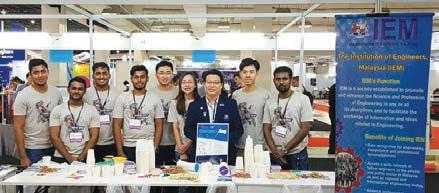
at the recent KLESF. This provided a platform and an opportunity for the young engineers to engage, educate and communicate with school students as well as instill in them an interest in STEM.
As for young women engineers, they are key to knocking down gender barriers.
In our realistic society, there are more environmental and social barriers for female students when they get involved in STEM sectors. Women are expected to marry and then become housewives. Academy of Sciences Malaysia (ASM) fellow Prof. Datuk Dr Halimaton Hamdan said that because of this long-time stereotyping, women tend to have self-doubts about whether they are suited for STEM careers; this has also caused them to feel they’re not as valued as their male counterparts.
Of the total 7.6 billion world population recorded in 2018, 49.6% are women. Thus, women should play an important role in STEM too. When more women take part in STEM industries, it indirectly increases the number of people involved in STEM but due to significant gender disparity, men greatly outnumber women in STEM industries.
The Star newspaper reported that when women take part in the management of technology companies, these companies achieve a 34% higher return on investment. This strongly proves that women play an equally important role as men in STEM industries. There is no gender bias in the supply of STEM talent. To encourage the public to break away from gender stereotyping, young women engineers should stand up and be role models for female students.
One of the best female role models in STEM is Y.B. Yeo Bee Yin, Minister of Energy, Technology, Science, Climate Change & Environment and an engineer by training. At 35, she is also the youngest woman to be a full Cabinet minister. She is also a female leader in STEM and serves as a role model for future generations of women to participate in STEM industries.

Women engineers in STEM leadership roles should share their passion for the wonders of science, working experiences in STEM industries and lessons they have learnt along the way so that the younger generation can understand real world challenges. This way, girls will be able to eliminate their doubts and gain confidence in their scientific abilities so that in the future, they too can be successful in STEM fields.
Young women engineers can also take the initiative to create a STEM mentorship programme to help promote interest and capacity-building in science and mathematics among female school students.
In short, STEM is critical to the growth of our country’s economy and it already impacts all parts of our daily lives. Young engineers play an important role in encouraging school students to participate in STEM activities.
Young women engineers should promote STEM to young girls to help overcome the gender bias and cultivate STEM interest among them as well.
To quote Shameema Parveen, CEO of Edutech, “All great inventors in the world have succeeded from never giving up - the ability to keep trying is what makes a good inventor”.
1. Images source: 2. http://eduplaying.com/stem/ 3. http://www.humanresourcesonline.net/ malaysia-faces-low-female-participation-instem-sectors/ 4. http://3.bp.blogspot.com/-QPGhoKJoVT0/ UM9NcE1sS6I/AAAAAAAABbA/DY–H6SOlXU/ s1600/DSC_7066.jpg

JACKED ANCHORS RETAINING WALL

● ● ● ● Assured Capacities
●
Improvement to Soil Properties
No Soil Settlement & Sinkholes
Much Shorter Construction Time
Lower Construction Cost




STONED
Excellent For Soft Ground Improvement
● ● ● Dry Operation
Volumetric Proof of Design Diameter
Every Stone Column is Tested
WE ARE CURRENTLY IN SEARCH OF ACTIVE INVESTORS LOCALLY & GLOBALLY FOR EXPANSION
Please Contact: 019 382 4875 (Aw), 019 310 1760 (Yu), 019 382 2688 (Su), 03 7729 9826 (Office)
Explore our full set of Professional and Integrated PUBLISHING MANAGEMENT SERVICES:
» Project Management
» Crea�ve Management
» Ad Space Management
» Mailing Management
» Print Management
• Annual Reports
• Booklets • Brochures
• Bun�ngs • Business Cards
• CD / DVD Replica�ons
• Calendars • Cards & Invita�ons
• Cer�ficates • Custom Prin�ngs
• Envelopes • Folders
• NCR Bill Books • Notepads
• Leaflets • Le�erheads
• Paper Bags • Posters
• S�ckers • Others









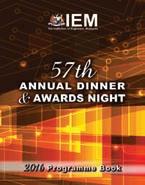


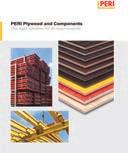






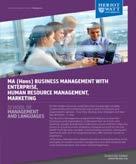




















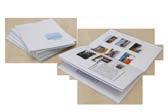


Wby Ir. Shum Keng Yan
e have looked at addressing the perceptions of “Significance” and “Timing” in influencing behaviours. Now we will look at “Consistency”.
In our February 2018 article, we noted that being able to get away with unsafe acts and feeling more comfortable were consistent each time a person repeated an unsafe act. This reinforced the desire to repeat the unsafe act.
How does this compare if the supervisor takes action? For instance, the supervisor sees the unsafe act and calls out that it is unacceptable by explaining the adverse outcome to the person. This will provide the significance and immediacy. The same needs to be repeated each time. Suppose the unsafe act occurs again and there is no call out. How will the employees perceive this? There is a lack of consistency in the expectations. This will weaken the original message that the unsafe act is not acceptable.
“Consistency” is about driving the same level of expectations every time there is an unsafe act. Any deviation or exemption due to cost, time, favouritism, hierarchy or other reason will create inconsistency, thus diluting the key message. Employees are quick to recognise when there is an inconsistency and will use the same reasoning when they choose to work in an unsafe way.
Only by combining “Consistency” with “Significance” and “Timing” will we be able to create a reinforcing message and drive behavioural change.
If you detect any inconsistency, drop me at note at: pub@iem.org.my.
“It’s not what we do once in a while that shapes our lives. It’s what we do consistently.” Anthony Robbins.

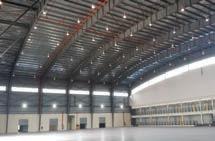


Title: The IEM-CIE-HKIE Tripartite Seminar 2018 on “Geotechnical Challenges in Infrastructures and Transportation Projects” 4 September 2018
Organised by : Geotechnical Engineering Technical Division
Time : 8.30 a.m. - 6.30 p.m.
CPD/PDP : 7





















Contributed by Michelle Lau
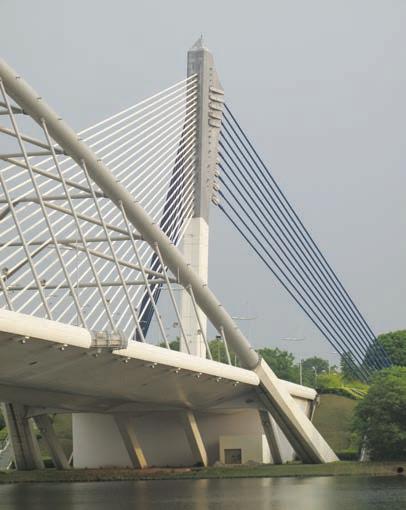

The bridges of Putrajaya were built using various construction methods. Seri Gemilang, a steel and concrete road bridge, is used for many ceremonial parades, while Seri Wawasan is based on cable back stays and steel tie backs. Both have distinct profiles and perspectives that are very eye-catching. In fact, CNN Travel has ranked the Seri Wawasan Bridge as one of the world’s most amazing bridges.
“This section is dedicated to all members with passion for photography. If you think you have taken pictures worthy of publication, please submit them to may@iem.org.my. Editorial Board welcomes submission with a paragraph of description that depicts engineering literally or metaphorically.”
reported by YOUNG ENGINEERS SECTION


This year, the Malaysia-Taiwan Young Engineer Exchange Forum saw an initiative for further collaboration to foster international ties among young engineers, to promote technical exchanges between young engineers and to provide students in the host country to interact with practising engineers from various industries. The event, organised by The Chinese Institute of Engineers (CIE), The Chinese Association of Engineering Consultants (CAEC) and The Taiwan Construction Research Institute (TCRI) and Young Engineers Section of The Institution of Engineers, Malaysia (IEM-YES), attracted 14 delegates from Malaysia, Singapore, Brunei and Hong Kong. It was held in Taipei, Taiwan, on 15-17 March, 2018.
It started with a social networking session to meet new friends and to renew acquaintances, some of which originated from CAFEO (Conference ASEAN Federation Engineers Organisation). Delegates caught up with one another, while making new friends. The event then proceeded with “Global, Regional, Local Trends & Roles of Civil Engineers”, shared from the perspectives of Taiwan and Malaysia, by Mr. Chen Yi Min (Taiwan) and Mr. Tan Zhi Howe (Malaysia). This was to give students in Taiwan an introduction to an industrial overview of the Taiwan-Malaysia engineering, expectations and practices.

Then, in “Keys to Success in Engineering Industry as a Young Engineer”, Dr Chang Jung Feng from Taiwan as well as Ir. Yeoh Su Hong and Mr. Chin Woon Kheong from Malaysia shared hard-learned lessons collected over the years. Few key take-aways from this were that, to keep abreast of times, young engineers must update their knowledge in an effective manner, cultivate and integrate their knowledge across functional domain and blend the technical skills with diversity of knowledge to conduct engineering from a holistic approach. The trio’s professional experiences gave young engineers and students valuable insight into a career in the construction industry.
Next, representatives from Taiwan, Malaysia, Singapore, Brunei and Hong Kong came together in an open panel discussion to talk about relevant issues and challenges they faced in their communities as well as
how they tackled these issues. They also offered early career advice and tips which would help motivate the students to take the next great leap into an engineering career.
Delegates were invited to join a technical visit to Danhai LRT System. Upon arrival at the site office in Danshui, the delegates were briefed on the project development by a representative from Project Management consultant Moh and Associates (MAA) and received a warm welcome from the Department of Rapid Transit System, New Taipei City. He shared with delegates a part of the history of the project, the challenges faced – such as land acquisition for the Danhai LRT development – and the construction technologies adopted for the construction. Later, the delegates toured the site and witnessed the testing of the first Taiwanese-designedand-made LRT rolling stock.
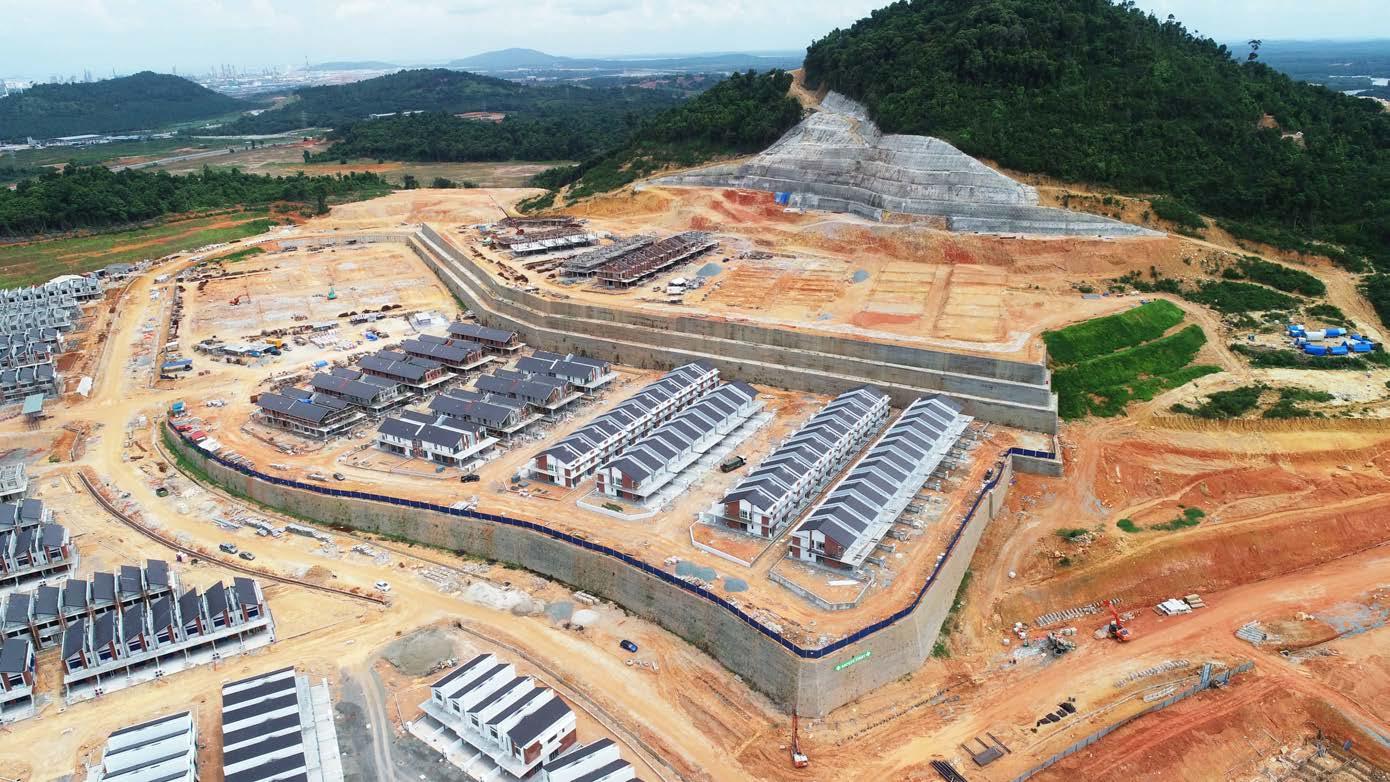

Polyfelt® PEC composite geotextiles are engineered from high tenacity polymers and nonwovens to combine the functions of high strength reinforcement, superior filtration and drainage to enable finer-grained soils to be reinforced effectively to stabilize walls and slopes. Call TenCate for a complete geosynthetics solution.
TenCate Geosynthetics Asia Sdn. Bhd. (264232-U) 14, Jalan Sementa 27/91, Seksyen 27, 40400 Shah Alam, Selangor Darul Ehsan, Malaysia.
Tel: +60 3 5192 8568 Fax: +60 3 5192 8575
Email: info.asia@tencategeo.com www.tencategeo.asia

open to all universities (public & private)


The next day, the delegates visited the CIE office for a discussion session and country presentation, where the representatives of each country took turns to talk about their organisations, history, size, structure, past events, membership drive strategies etc. A post-mortem discussion was then conducted to gather feedback from participants for greater improvements at the next event.
IEM and CIE had launched this initiative to bring together young engineers of the engineering fraternity not limited to SEA but from around the world. The detailed objectives are to be further developed and refined as it progresses.
The 3-day event ended with a farewell dinner on 17 March at Madison Hotel Urban 331 Bistro, hosted by CIE and CAEC. Present were Dr Moh Za Chieh, a key person in Taiwan’s engineering development, Mr. Wen Tai Hsin, Secretary General of Taiwan
Railway Reconstruction Bureau as well as Head of Department of the Civil Engineering at National Taiwan University (NTU) and National Taiwan University of Science & Technology (NTUST). It was an enjoyable evening and delegates left with fond memories of their time in Taiwan. IEMYES would like to thank CIE and CAEC for hosting the event; we look forward to the next event hosted by HKIE in Hong Kong.
Title: 1-Day Short Course on Design of Piled Foundations
5 September 2018
Organised by : Geotechnical Engineering Technical Division
Time : 8.30 a.m. - 6.30 p.m.
CPD/PDP : 7.5
Title: Technical Visit to EWT Transformer Sdn. Bhd.
19 September 2018
Organised by : Mechanical Engineering Technical Division
Time : 9.00 a.m. - 1.00 p.m.
CPD/PDP : Applying
Kindly note that the scheduled events are subject to change. Please visit the IEM website at www.myiem.org.my for more information on the upcoming events.
We are a supplier of high quality geosynthetic products used for soft soil stabilization, slope reinforcement, coastal erosion protection, river bank protection, landfills, drainage, road and railway construction.
Our Products:
NEXTILE NON-WOVENS
NEXGRID GEOGRIDS
We also provide design, specification, bill of quantities, cost estimate and drawings free-of-charge.




NEXFORCE HIGH-STRENGTH WOVENS




Get in touch with us: Tel: 03-6142 6638 Fax: 03-6142 6693
sales@neusynthetics.com
Sales Team:
HP : 012 355 9151
In conclusion, the event successfully gathered engineers from participating countries for exchanging ideas and networking. It is set to become a platform for professional network opportunities, a platform to engage and be exposed to new things, a platform to exchange ideas, share engineering best practices and expertise, for better cross-border relationships and for knowledge sharing in preparation to face challenges of the future. A Nehemiah Group of Companies www neusynthetics com
For further information on our range of geosynthetics products, please contact: Lee Hui Seng
NEHEMIAH GEOSYNTHETICS SDN BHD 45-3 Jalan PJU 5/20, The Strand, Kota Damansara, 47810 Petaling Jaya, Selangor Darul Ehsan.
Lee Hui Seng (012-3293378) Fazrol (012-3163341)
HP : 012 329 3378 (Whatsapp only)
Tel : 603 6142 6638
Fax : 603 6142 6693
Email : leehuiseng@nehemiahwalls.com
Email : enquiry@nehemiahwalls.com www.nehemiahwalls.com
The Strand, Kota Damansara, 47810 Petaling Jaya, Selangor Darul Ehsan Malaysia Formerly
reported by SOUTHERN BRANCH - YOUNG ENGINEERS SECTION


Chan Yaw Yee Kenneth Chaw
The Institution of Engineers, Malaysia, Southern Branch, Young Engineer Section (IEM SB YES) held the Ingenieure & Engineers Cup (IE Cup) on 3 March, 2018, at Daiman Sri Skudai Sports Centre, Johor Baru. The main objectives were to encourage a healthy lifestyle for engineers and to increase bonding between IEM members and the public. Besides having a good time at the badminton tournament, members also enjoyed communicating and networking. For the tournament, teams taking part comprised 5 male players and 1 female player. The participants must be in an engineering-related field but never been involved in state tournaments or higher levels.
The 31 teams of 186 participants were divided into eight groups. The first and runner-up of each group then advanced to the knockout stage, where the champion was determined upon completion of the knockout stages. The event started with an opening speech by the Honorary Secretary of IEM Southern Branch, Ir. David Puen.
In addition, friendly matches among YES branches was also carried out concurrently at the same venue after the group stage. Participants included IEM members from all around the country such as IEM YES HQ (KL), IEM YES (Penang branch), IEM YES (Melaka branch) and friends from The Institution of Engineering & Technology (IET) at University of Southampton. YES members fully utilised the opportunity to network
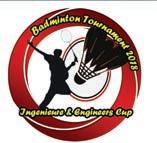

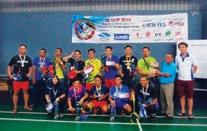
among themselves, especially in terms of engineering and technological information sharing.
After 4 hours of group matches and 4 hours of knockout stages, the winners were finally determined. Present at the prize presentation ceremony were IEM SB Chairman Ir. Mohd Khir and members of the organising committee. Sponsors
provided prizes worth a total RM8,200 which were awarded to the winners in the respective categories. The venue sponsor was Daiman Johor Jaya Sports Complex Berhad while cash and other prizes were sponsored by NS BlueScope Lysaght Malaysia Sdn. Bhd., MAPEI Malaysia Sdn. Bhd., Hong Xin Construction Sdn. Bhd., Chuan Luck Piling Sdn. Bhd., Haily Construction Sdn. Bhd., Siacon Technology Sdn. Bhd., Laubros Holdings (M) Sdn. Bhd., and our in-kind sponsor by Match Point Sport Café.
Title: ICTSIG Junior Digital Class (September 2018) - S.T.E.M fun learning: Introduction to Physical Computing and Software Development
5 September 2018
Organised by : Information and Communications Technology Special Interest Group
Time : 9.00 a.m. - 5.30 p.m.
CPD/PDP : N/A
Title: Talk on Visionary Leadership (Active Learning Lab Session)
8 September 2018
Organised by : Women Engineers Section Time : 9.00 a.m. - 11.00 a.m.
CPD/PDP : 2
Kindly note that the scheduled events are subject to change. Please visit the IEM website at www. myiem.org.my for more information on the upcoming events.
reported by SARAWAK BRANCH - YOUNG ENGINEERS SECTION



The IEM Engineering Expo was initially held in conjunction with Pi Day to commemorate Pi (π), a constant that is essential not only in mathematics but also in engineering. It used to be held on or around 14 March each year, in line with the value of Pi which is 3.142.
However, in 2017, the event concept was revamped to place more emphasis on engineering itself. The expo now features more than just companies exhibiting engineering products and services; it includes companies looking to recruit engineers, universities, government agencies and other learned societies related to the engineering field.
This year’s event, themed “Engineers, Em POWER ing Our Nation”, was held on 14-15 April at The Hills Shopping Mall, Kuching. It was launched by Batu Kitang State Assemblyman, Y.B. Cr. Ir. Lo Khere Chiang, who is also a civil engineer, together with IEM Sarawak Branch Chairman, Ir. Tang Chok Khing and other IEM Sarawak Branch and YES Sarawak committee members.
There were 37 booths, including that of Construction Industry Development Board (CIDB), National Institute of Occupational Safety and Health (NIOSH), Electrical Inspectorate Unit (EIU), institutions of higher education and engineering companies. Exhibits included the latest safety standards and regulations by the authorities, undergraduate and postgraduate programmes by universities and sophisticated engineering technologies by engineering companies.

Technical talks are a main highlight at the annual IEM Engineering Expo. Due to the overwhelming response received in 2017, parallel sessions were held this year to accommodate more than 20 talks, with topics ranging from the engineering field to occupational health and safety related issues.
CPD points were awarded to participants of technical talks on the latest engineering trends and technologies. A talk on “An Overview of the Professional Engineers’ Interview” was held for the benefit of graduate engineers planning to obtain their Professional Engineer status.
In conjunction with the event and to promote safety awareness, especially in the construction field, IEM Sarawak Branch also collaborated with CIDB to offer a mandatory course, “Course on Safety Induction Construction Workers (SICW)-CIDB”, for construction site personnel. Others who participated included contractors and other parties in the construction field.
IEM Sarawak Branch also invited Sarawak Veterinary Association and Sarawak General Hospital to give safety awareness talks related to the recent rabies outbreak, both
on human and animal aspects. Updates on the outbreak as well as precautionary actions were discussed during these sessions.
IEM Sarawak Branch, in collaboration with Malaysia Red Crescent Stampin Chapter and Borneo Medical Centre, held a blood donation drive during the event this year as part of its social responsibility programme. This received an encouraging number of turn-ups as in previous editions of the activity.
Other programmes included “Networking High Tea” and “Build & Break Competition”. The networking session was aimed at encouraging close interaction and exchange of ideas among exhibitors, technical talk participants and exhibition visitors, while the second programme was aimed at promoting creative thinking and engineering problem-solving skills among participants who were only given the problem and tools on the spot.
Overall, the event was a huge success. IEM Sarawak Branch would like to thank all parties involved for their kind support.
reported by

On June 30, 2018, The Institution of Engineers, Malaysia, Negeri Sembilan Branch (IEMNS) held its 25th Annual General Meeting at the IEM office in Oakland Commercial Square, Seremban. It was attended by 56 members, comprising 3 fellows, 52 corporate members and 1 graduate member. Representing the IEM President was Deputy President Ir. Ong Ching Loon. Prior to the AGM, Ir. Ong delivered an informative presentation on Energy Efficiency and Conservation.
IEMNS was established in 1993. Today, there are 1,668 members, comprising 10 fellows, 276 corporate members, 336 graduate members, 1,027 student members and 19 other grades. Since 2008, IEMNS owns an office lot equipped with appropriate infrastructure to hold activities such as talks, meetings, professional engineer interviews and special event celebrations.
This year, Ir. Dr Oh Seong Por was elected Chairman of IEMNS for session 2018/2019, taking over from Ir. Zainurin bin Karman. Ir. Dr Oh is also a committee member in the standing committee on information and publication as well as on the editorial board of IEM HQ. Other newly elected members were Ir. Mohd Azlan bin Othman (Vice Chairman), Ir. Abdul Rahim bin Sidek (Honorary Secretary) and Ir. Chong Chee Yen (Honorary Treasurer).
In his inaugural Chairman’s address, Ir. Dr Oh reaffirmed the
Executive Committee, IEM Negeri Sembilan Branch Session 2018 / 2019
Chairman Ir. Dr Oh Seong Por
Vice Chairman I Ir. Dr Zarabizan bin Zakaria
Vice Chairman II Ir. Mohd Azlan bin Othman
Honorary
Secretary Ir. Abdul Rahim bin Sidek
Honorary
Treasurer Ir. Chong Chee Yen
Committee Members Ir. Richard Khoo Nee Kheong
Ir. Kanna Dasan Narayanasamy
Ir. David Teh Wee Teck
Ir. Dr Noorazizi bin Mohd
Immediate Past Chairman Dato Ir. Zainurin bin Karman
Past Chairman Ir. Tiong Ngo Pu Ir. Shahrin Amri bin Jahari
commitment to revitalise activities aligned with the IEM mission, namely to promote the engineering profession to support the socio-economic development of our nation, to provide services to members and to enhance society’s consciousness of science, engineering and technology. Several activities have been proposed, such as technical visits to industries or projects for members to learn, benchmark and create networking, inviting experts to give talks for the sharing of experience and information, to conduct training for candidates and students on the roadmap to becoming
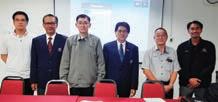
a professional engineer and to disseminate information to champion the engineering profession and IEMNS activities.
Ir. Dr Oh also urged members, nonmembers and students to participate in the activities. Members were invited to contribute ideas and suggestions. Finally, to show appreciation to the Deputy President, Immediate Past Chairman and fellow members, he recited a Malay pantun.
Ribuan Terima Kasih diucapkan Kepada Timbalan President Persatuan Kerjasama tuan selalu diharapkan Demi kemajuan persatuan
Ribuan Terima Kasih diucapkan Kepada Dato Pengerusi Persatuan Sumbangan Dato tetap diperlukan Semoga Dato kekal di AJK persatuan
Ribuan Terima Kasih diucapkan Kepada semua warga persatuan Penyertaan warga amat dialukan Demi kejayaan persatuan




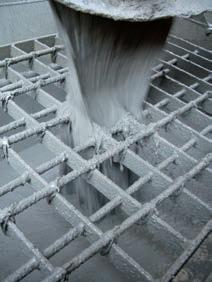
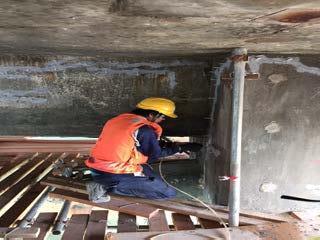
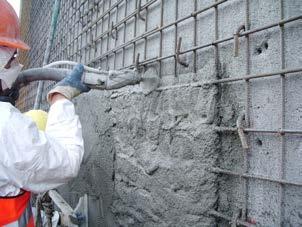



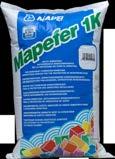
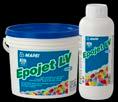
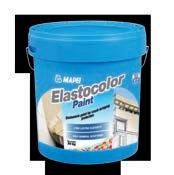


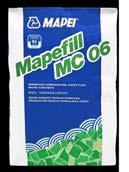



Yes! I would like to be a subscriber of The Institution of Engineers, Malaysia’s publications
Name: _________________________________________________________________________________________________________
Mailing Address: _________________________________________________________________________________________________
Country: ________________________
Company/Institution: ______________________________________________________________________________________________
Title: ____________________________________________________________________________________________________
Telephone No: _________________________ Fax: _________________________ Email: _________________________________
New Subscriber Renewal
Please commence my subscription from: _________________________(month/year) Signature: _______________________________
To start your subscription of IEM’s publications, complete this form and mail it back to the address below. For faster processing, fax it to: +603 7493 1047. Thank you.
What is your primary job title?
Corporate Management (including chairman, president, proprietor, partner, director, vice president, general manager, division manager, import/export manager, other corporate title)
Management (including project/contract/equipment/service/transport district manager, clerk of works, other technical or operating manager)
Engineering/Design (including chief engineer, chief designer, civil/ highway/mechanical/planning engineer, other engineering/design title)
Buying/Purchasing (including chief buyer, buyer, purchasing officer, other buying/purchasing title)
Titles allied to the field (architect, consultant, surveyor, research and development professor, lecturer, supervisor, superintendent, inspector or other allied title)
Others (please specify) ____________________________
What type of organisation do you work in? (Tick one box only)
Contractor
Sub-contractor specialist
Design and build contractor
Consulting engineering/architectural/quantity surveying practice
Mining/quarrying/aggregate production company
Petroleum producer
International/national authorities
National/regional/local government
Public utilities (electricity, gas, water, deck and harbour, other)
Manufacturer
Distributor/importer/agent
Construction department of large industrial/Commercial concern
Association/education establishment/research
Construction equipment hire/rental company
Project/construction management consultancy
Others (please specify) _______________________________
What are the main activities of your organisation? (Tick all that apply)
Constructions of:
Roads/bridges

Manufacturer of:
Construction equipment
Dams/reservoirs/irrigation Cement
Harbours/offshore structures Other construction materials
Foundations/tunnels Distribution Pipelines/refineries Construction equipment
Structures/steel work Construction materials
Building (commercial, industrial) Hire/rental of construction equipment
Housing Design
Construction management Earth-moving/open cast mining
Deep mining Aggregate production
Others (Please specify) _________________________________________
Rate (Please tick)
RM360.00 - 12 issues of JURUTERA
RM84.00 - 2 issues IEM Journal (Half-yearly)
Terms and Conditions:
1) The subscription is to be prepaid.
2) Please make cheque payable to Dimension Publishing Sdn. Bhd.
3) Subscriptions are not refundable.
4) Magazine/s will be sent to the mailing address given.
5) Students are entitled for a 20% discount from the above subscription rate.
6) Students must submit a photocopy of the student identification card together with the payment.
7) The above rate is inclusive of delivery charges and applicable in Malaysia only.
8) Additional delivery charges will apply to overseas subscribers.
For subscription enquiries, please contact +603-7493 1049 or email to info@dimensionpublishing.com

During a company family trip to Lake Toba, Medan, in early November, 2017, we unsuspectingly discovered an experience that would heal our souls as well as help us appreciate and cherish the diversity of this world.
Medan, the third largest city in Indonesia (population 3 million) is home to Graha Maria Annai Velankanni (Marian Shrine). This unique Catholic shrine is dedicated to The Lady of Good Health, in reverence to the 17th century apparition of Mother Mary in Velankanni, Tamil Nadu State, India.
The Catholic Church in Medan has been in operation since 2005. Its uniqueness stamps from its spectacular Indo-Mughal architecture which incorporates components of other religions including Buddhism, Hinduism, Taoism and Islamic features. Save for discreetly mounted crosses, an uninitiated passerby could be forgiven for assuming the building to be a Hindu temple. It took amateurs four years (2011-2015) to build the shrine, masterminded by
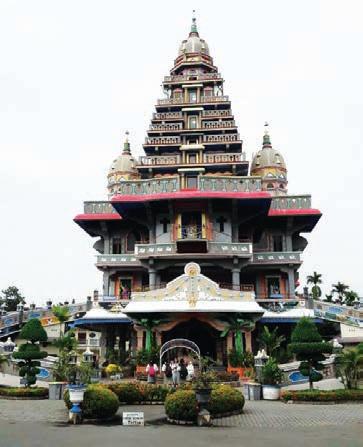
It was largely funded by public donations. The external facade was painted in multi-colours of black, grey, white, red, green, blue and yellow in ascending order, with each colour symbolising a certain Christian concept. The colour sequence also symbolises profoundly the faith journey of a human from sin to God’s glory.
It was built for the Tamil Catholic community which first came to Medan to work in a the plantations in the 19th century, under the Dutch administration. It also serves as a pilgrimage centre for Catholics in South East Asia who come to seek healing, solace, peace and a cleansing of the soul.
The main prayer hall for prayer services (Eucharistic Masses etc.) on the upper floor is accessible via two spiral staircases on each side in the front. Inside the building, Bible quotations and images are displayed in four languages (Indonesian, English, Tamil and Chinese). Inside, I could feel such a sense of peace and calm, coupled with joy and awe at God’s creation that I burst out singing “How Great Thou Art”.
On this short trip, we truly appreciated the open-mindedness of the majority Muslim population which accepted people of other races and faiths to practise their religions openly. It is heartening to see the people live in peace and harmony.
Tarikh: 18 Julai 2018
Kepada Semua Ahli,
SENARAI CALON-CALON YANG LAYAK MENDUDUKI TEMUDUGA PROFESIONAL TAHUN 2018
Berikut adalah senarai calon yang layak untuk menduduki Temuduga Profesional bagi tahun 2018.
Mengikut Undang-Undang Kecil IEM, Seksyen 3.8, nama-nama seperti tersenarai berikut diterbitkan sebagai calon-calon yang layak untuk menjadi Ahli Institusi, dengan syarat bahawa mereka lulus Temuduga Profesional tahun 2018.
Sekiranya terdapat Ahli Korporat yang mempunyai bantahan terhadap mana-mana calon yang didapati tidak sesuai untuk menduduki Temuduga Profesional, surat bantahan boleh dikemukakan kepada Setiausaha Kehormat, IEM. Surat bantahan hendaklah dikemukakan sebulan dari tarikh penerbitan dikeluarkan.
Ir. Mohd Khir bin Muhammad FIEM, PEng Setiausaha Kehormat, IEM (Sessi 2018/2019)
PERMOHONAN BARU Nama Kelayakan
KEJURUTERAAN AWAM
AINA BINTI ADAM BE HONS (UiTM) (CIVIL, 2007)
AHMAD ABDUL SHAHID BIN
MOHAMAD BE HONS (UTHM) (CIVIL, 2007)
AZRI HIZAMI BIN ABDUL AZIZ BE HONS (UTM) (CIVIL, 2010)
FADZLI BIN MD NORDIN BE HONS (UPM) (CIVIL, 2005)
NORLELA BINTI ABU BAKAR BE HONS (UTM) (CIVIL, 2006)
RAHAYU BINTI MD DIAH BE HONS (UTM) (CIVIL, 2005)
SALMIA BINTI BEDDU BE HONS (USM) (CIVIL, 2006) MSc (USM) (STRUCTURAL, 2007) PhD (UTP) (CIVIL, 2012)
WONG BAK SOON, DAVID BE HONS (USM) (CIVIL, 2005)
YUSUF BIN ABD. GHANI BE (MIDDLESEX POLYTECHNIC) (CIVIL, 1986)
ZALIHAN BNTI ZAHARI BE HONS (UiTM) (CIVIL, 2003)
KEJURUTERAAN ELEKTRIKAL
ABU SUFIAN BIN HJ ABU BAKAR BE HONS (UNITEN) (ELECTRICAL & ELECTRONICS, 2009) ME (UNITEN) (ELECTRICAL, 2017)
AIMAN BIN ISMAIL BE HONS (UNITEN) (ELECTRICAL & ELECTRONICS, 2008)
CHONG KUEN WAI BE HONS (UTM) (ELECTRICAL, 2002)
MUHAMMAD HAFEEZ BIN
MOHAMED HARIRI BE HONS (USM) (ELECTRICAL, 2010) MSc (USM) (ELECTRICAL & ELECTRONIC, 2014)
NURZARINA BINTI ABU BAKAR BE HONS (UTM) (ELECTRICAL, 2007)
KEJURUTERAAN ELEKTRONIK
FIDELIA OLGA FRED BE HONS (UiTM) (ELECTRICAL, 2004)
KEJURUTERAAN MEKANIKAL
MOHD KHAIRUL HAMZI BIN MHD JAMIN BE HONS (UTM) (MECHANICAL, 2008)
MOHD SAIFUL BIN IDRIS Dipl. Ing (KARLSRUHE) (MECHANICAL, 2010)
KEJURUTERAAN MEKATRONIK
MOHD ARI NAZRUL BIN ABD RAHMAN BE HONS (UniMAP) (MECHATRONICS, 2007)
PERMOHONAN BARU/PERPINDAHAN MENJADI AHLI KORPORAT Nama Kelayakan
KEJURUTERAAN AWAM
CHAI YOKE FONG BE HONS (UTM) (CIVIL, 1994)
QUECK HAN TIONG BE HONS (UTM) (CIVIL, 2000)
KEJURUTERAAN ELEKTRIKAL
DOMINIC KONG SAY SEONG BE HONS (UPM) (ELECTRICAL & ELECTRONICS, 2010)
PUAH KUAN HUA BE HONS (MMU) (ELECTRICAL, 2009)
PERPINDAHAN AHLI
No. Ahli Nama Kelayakan
KEJURUTERAAN AWAM
34159 CHAN KWOK KWANG BE HONS (UNIMAS) (CIVIL, 2009)
87145 CHIN CHUN KIAT BE HONS (UTAR) (CIVIL, 2013)
94013 CHONG KIAN MING BE HONS (UTHM) (CONSTRUCTION, 2006)
59944 FADZLI MOHAMED NAZRI BE HONS (USM) (CIVIL, 2005) MSc (USM) (CIVIL, 2008) PhD (BRISTOL) (2012)
78461 KELVIN LAW PUANG RONG BE HONS (SWINBURNE) (CIVIL, 2011)
81477 LIEW KAR HOE BE (QUEENSLAND) (CIVIL, 2011)
79581 NORAM IRWAN BIN RAMLI BE HONS (UiTM) (CIVIL, 2004) MSc (USM) (STRUCTURAL, 2005)
89457 SITI FATIMAH BINTI CHE OSMI BE HONS (SURREY) (CIVIL, 2006) ME (SURREY) (WATER & ENVIRONMENTAL, 2009)
70446 SU KEIN LEONG BE HONS (CURTIN) (CIVIL & CONSTRUCTION, 2013)
38786 SYAHBRINA BINTI HJ. OSIN BE HONS (UTHM) (CONSTRUCTION, 2006)
KEJURUTERAAN BIOMEDIKAL
93539 KHAIRUNNISA BINTI HASIKIN BE HONS (MALAYA) (ELECTRICAL, 2007) MESc (MALAYA) (BIOSENSOR, 2010) PhD (USM) (2014)
KEJURUTERAAN ELEKTRIKAL
78886 NAJWA BINTI ISMAIL BE HONS (UMS) (ELECTRICAL & ELECTRONICS, 2006)
76026 NG SOON HEE BE HONS (UTAR) (ELECTRICAL & ELECTRONICS, 2014)
66681 RAVEEN KUMAR A/L RAMALINGAM BE HONS (UTP) (ELECTRICAL & ELECTRONICS, 2010) ME (UTM) (ELECTRICAL - POWER, 2014)
89714 SAMUEL OH MING OOI BE HONS (MONASH) (ELECTRICAL & COMPUTER SYSTEMS, 2010)
93915 THEN KIM KIAN BE HONS (MALAYA) (ELECTRICAL, 2012)
KEJURUTERAAN ELEKTRONIK
75280 SHAHRIL IRWAN BIN SULAIMAN BE HONS (UNITEN) (ELECTRICAL & ELECTRONICS, 2002)
KEJURUTERAAN INSTRUMENTASI DAN KAWALAN 24776 KAMARUL AZLAN BIN MD BUKHRI BE HONS (UTM) (ELECTRICAL, 2003)
KEJURUTERAAN KIMIA 41979 LOH CHEE SENG BE HONS (UPM) (CHEMICAL, 2000)
KEJURUTERAAN MEKANIKAL
36991 FAIZAL BIN MOHAMED YUSOFF BE HONS (U.M.I.S.T) (MECHANICAL, 1998) 89688 MOHD SUKRIE BIN RAMLI BE HONS (UTHM) (MECHANICAL, 2010) 94362 SYAHRUL ANUAR BIN ABD WAHAB BE HONS (UTM) (MECHANICAL, 1998)
KEJURUTERAAN SUMBER AIR 88481 AMIRUDEAN BIN SAPIEE BE HONS (UiTM) (CIVIL, 2011) MSc (BIRMINGHAM) (WATER RESOURCES TECHNOLOGY & MANAGEMENT, 2014)
PERMOHONAN BARU / PERPINDAHAN MENJADI AHLI KORPORAT No. Ahli Nama Kelayakan
KEJURUTERAAN AWAM
24350 ANIZAHYATI BINTI ALISIBRAMULISI BE HONS (UiTM) (CIVIL, 2001) ME (UTM) (CIVIL-STRUCTURAL, 2006) PhD (NORWEGIAN UNIVERSITY OF SCIENCE & TECHNOLOGY) (STRUCTURAL, 2014) 12583 ZAINAL ABIDIN BIN ZAKARIA BE (NORTH EAST LONDON POLYTECHNIC) (CIVIL, 1988)
KEJURUTERAAN MEKANIKAL
43137 MD NIDZAM BIN MD PADZI BE HONS (UTHM) (MECHANICAL, 2004)
Title: Technical Visit to Proton Tanjung Malim 13 September 2018
Organised by : Mechanical Engineering Technical Division
Time : 9.00 a.m. - 1.00 p.m.
CPD/PDP : 3
Kindly note that the scheduled events are subject to change. Please visit the IEM website at www.myiem.org. my for more information on the upcoming events.
Persidangan Majlis IEM yang ke-413 pada 16 Julai 2018 telah meluluskan sebanyak 1675 ahli untuk permohonan baru dan permindahan ahli. Berikut adalah senarai ahli mengikut disiplin kejuruteraan:
Senarai nama ahli dan kelayakan adalah seperti di bawah. Institusi mengucapkan tahniah kepada ahli yang telah berjaya.
Ir. Mohd Khir bin Muhammad FIEM, PEng
Setiausaha Kehormat, Institusi Jurutera Malaysia, Sesi 2018/2019
PEMINDAHAN AHLI KEPADA AHLI FELLOW
No. Ahli Nama Kelayakan
KEJURUTERAAN AWAM
18037 NGUI MIN FUI@TOM BE HONS (LEEDS) (CIVIL, 1995)
KEJURUTERAAN ELEKTRONIK
18809 LIM KEE WENG, BERNARD BE HONS (NOTTINGHAM TRENT) (ELECT & E'TRONIC, 1996)
KEJURUTERAAN MEKANIKAL
15937 ZAINAL FITRI ZAINAL ABIDIN BE HONS (MANCHESTER METROPOLITAN) (MECH, 1992)
PEMINDAHAN AHLI KEPADA AHLI SENIOR
No. Ahli Nama Kelayakan
KEJURUTERAAN AWAM
16504 ISMAIL BIN ABD RAHMAN B.E.HONS.(UITM)(CIVIL, 1997) M.E.(UTM)(GEOTECHNICS, 2007)
48130 ZARABIZAN BIN ZAKARIA B.E.HONS.(UTM)(CIVIL, 2002) M.E.(UPM)(HIGHWAY & TRANSPORTATION, 2009) PHD.(UTM)(2016)
KEJURUTERAAN ELEKTRIKAL
60072 IRYANI BINTI MOHAMED RAWI B.E.HONS.(UTM)(CIVIL, 2002)
17677 MOHD FADIL BIN ABU SAMAH B.E.HONS.(UTM) (ELECTRICAL, 2000) M.E.(UTM)(ELECTRICALPOWER, 2014)
KEJURUTERAAN MEKANIKAL
12557 LT KDR (B) MOHD NAZRI BIN MOHD JAMIL
B.E.HONS.(UTM) (MECHANICAL-MARINE TECHNOLOGY, 1991)
PEMINDAHAN AHLI KEPADA AHLI KORPORAT
No. Ahli Nama Kelayakan
KEJURUTERAAN ALAM SEKITAR
42502 NOOR HAFIZAH BINTI KUSNIN BE HONS (UTM) (CIVIL-CONSTRUCTION MANAGEMENT, 2005)
KEJURUTERAAN ARKITEK NAVAL
70364 MOHD FAKHRUDDIN BIN ZAINAL ASHIRIN BE HONS (TASMANIA) (MARINE & OFFSHORE SYSTEMS, 2011)
KEJURUTERAAN AWAM
49423 ABDUL HADI BIN FIRUZ AHMAD BE HONS (UITM) (CIVIL, 2010)
38312 ABDUL MUSAWIR BIN ABDUL WAHID BE HONS (USM) (CIVIL, 2006)
37939 ADLY BIN DASRIL BE HONS (UTM) (CIVIL, 2006)
87604 AHMAD SAIFUDDIN BIN ABDUL BE HONS (UITM) (CIVIL, 2000)
35905 ALLAN CHWEE YEW LUN BE HONS (UTM) (CIVIL, 2011)
14770 ALLAN GUY GOONTING BE HONS (MONASH) (CIVIL, 1991)
37313 ASRIMAYANTI BINTI CHI ARI BE HONS (UTHM) (CIVIL, 2010)
70417 AZURA BINTI MEGAT IBRAHIM BE HONS (UKM) (CIVIL & STRUCTURAL, 2000)
24424 AZURA HANIM BINTI SULAIMAN BE HONS (UPM) (CIVIL, 2003) MSC (UITM) (CONSTRUCTION, 2010)
28909 CHAN KOK YUEN BE HONS (UPM) (CIVIL, 2007)
28240 CHEAH CHEE BAN BE HONS (USM) (CIVIL, 2009) PHD (USM) (2012)
44179 CHENG SHU HUI BE HONS (UTM) (CIVIL, 2006)
39982 CHEONG WAI SHIN BE HONS (UTM) (CIVIL, 2006)
91016 CHIAM TEE YONG BE HONS (UTAR) (CIVIL, 2011)
32881 CHIN NYUK JYI BE HONS (UNIMAS) (CIVIL, 2011)
41527 CHUNG JIA JIUNN BE HONS (UMP) (CIVIL, 2011)
27553 DURAIDA BINTI SALLEH BE HONS (USM) (CIVIL, 2004) MSC (USM) (PROJECT MANAGEMENT, 2008)
34362 EMMY SHERINA BINTI ISMAIL HASHIM BE HONS (UKM) (CIVIL & ENVIRONMENTAL, 2004)
59928 EZLIANA BINTI GHAZALI BE HONS ( UITM ) (CIVIL, 2009) MSC (UITM) (CONSTRUCTION, 2011)
39050 GALIH ANAK ANDREW TUKAU BE HONS (UITM) (CIVIL, 2007)
44129 GAN TZE NENG BE HONS (CURTIN) (CIVIL & CONSTRUCTION, 2009)
58014 GOH WAI KHUEN BE HONS (SWINBURNE) (CIVIL, 2008)
66725 HASNI BIN ZAINUDIN BE HONS (UTM) (CIVIL, 2013)
28078 HO KIAT YEE BE HONS (USM) (CIVIL, 2007)
36867 ISARUDDIN BIN MORSHIDI BE HONS (UNIMAS) (CIVIL, 2002)
27807 KAMALIAH BINTI MOHD SAHA BE HONS (UITM) (CIVIL, 2009) MSC (UITM) (STRUCTURE, 2011)
29882 KHOR JIANG CHAI BE HONS (USM) (CIVIL, 2008)
29531 KHOR KIAH TEE BE HONS (UPM) (CIVIL, 2010)
54578 KOK SAY CHOONG BE HONS (KLIUC) (CIVIL, 2008)
28915 KUAK CHAI WENG BE HONS (MALAYA) (CIVIL, 2007)
62161 KWANG KIM LUP BE HONS (UTAR) (CIVIL, 2013)
42352 LAI KER TZE BE HONS (UMS) (CIVIL, 2011)
43153 LAW JIA HAUR BE HONS (UTM) (CIVIL, 2006)
50249 LEE CHECK SHIN BE HONS (KLIUC) (CIVIL, 2011) ME (UPM) (STRUCTURAL & CONSTRUCTION, 2014)
27116 LEE KING SHEN BE HONS (UNIMAS) (CIVIL, 2005)
57611 LIEW CHIT WAI BE HONS (UTM) (CIVIL, 2013)
11148 LIEW CHOONG KONG BSC HONS ( BRUNSWICK) (CIVIL, 1986) MSC (BRUNSWICK) (CIVIL, 1988)
59932 LIM JEE HOCK BE HONS (UTM) (CIVIL, 2006)
94632 LIM MA HONG BE HONS (UTM) (CIVIL, 1999)
22093 LIONG SIN WEY BE HONS (UTM) (CIVIL, 2003)
29020 LOW KIAN YUNG BE HONS (UNITEN) (CIVIL, 2004) ME (UPM) (ENVIRONMENTAL, 2009)
60054 LOW SHEUE LIH BE HONS (UNITEN) (CIVIL, 2007)
26500 LOW SOON AIK BE HONS (UTM) (CIVIL, 2001)
32120 MARIAM BINTI AHMAD BE HONS (USM) (CIVIL, 2008) ME (UPM) (HIGHWAY & TRANSPORTATION, 2012)
47905 MOHAD 'FEDDER BIN MUSA "BE HONS (UTM) (CIVIL, 2014) ME (UTM) (CIVIL, 2017)"
22737 MOHAMAD ISWANDI BIN JINNE BE HONS (UKM) (CIVIL & STRUCTURAL, 2000)
29005 MOHAMED MEKHRAJUDIN BIN MUHAMMAD SAHID BE HONS (UITM) (CIVIL, 2004)
26625 MOHD FARIZ BIN MANSORUDIN BE HONS (UITM) (CIVIL, 2006)
28797 MOHD HADZMIR BIN YUSOFF BE HONS (UTM) (CIVIL, 1991)
27806 MOHD HAIDIR BIN HARON BE HONS (UITM) (CIVIL, 2008)
71135 MOHD KHAIRUUL KHAIR SHAH BIN ABDULLAH SANI BE HONS (UNISEL) (CIVIL, 2006)
28029 MUHAMAD HAMBALI BIN AB GHANI BE HONS (UTM) (CIVIL, 2002) MSC (UITM) (CIVIL, 2014)
93907 MUHAMMAD NASHRIQ FARHAN BIN SUPANDI BE HONS (UTM) (CIVIL, 2007)
66376 MUHAMMAD NOR HAFIDZI BIN MAHAT BE HONS (UTM) (CIVIL, 2009) ME (UTM) (STRUCTURE & MATERIAL, 2013)
36990 NOOR AZIM BIN MOHD RADZI BE HONS (UTM) (CIVIL, 2006) MSC (UKM) (CIVIL & STRUCTURAL, 2016)
27020 NOORFAIZAH BT HAMZAH BE HONS (UITM) (CIVIL, 2007) MSC (UITM) (GEOTECHNICAL, 2008)
25340 NOR AZLINA BINTI KASIM BE HONS (UITM) (CIVIL, 2004) ME (UPM) (HIGHWAY & TRANSPORTATION, 2015)
43573 NOR'AIZA BINTI JA'AFAR BE HONS (UPM) (CIVIL, 1996)
57530 NORAZURA BINTI MUHAMAD BUNNORI BE HONS (UKM) (CIVIL & STRUCTURAL, 1999)
33188 NUR HIZARUDDIN BIN CHE AJID BE HONS (UITM) (CIVIL, 2010)
29279 NUR WAHIDA BT BAKHTIAR BE HONS (UMP) (CIVIL, 2008)
43741 NURUL AINAA BINTI SELAMAT BE HONS (UTM) (CIVIL, 2008)
30556 ONG PENG PHENG BE HONS (UTHM) (CIVIL, 2007)
25563 ONG TAI BOON BE HONS (USM) (CIVIL, 2004)
24068 ONG TEIK JIN BE HONS (UM) (CIVIL, 2006)
30529 PARNAM SINGH A/L MEHAR SINGH BE HONS (BIRLA INST. OF TECH. SCIENCE) (CIVIL, 1985) MSC (BELFAST) (CIVIL, 1989)
41071 PHANG CHIN XIU BE HONS (UTM) (CIVIL, 2009)
29387 POH YIH CHERN BE HONS (UPM) (CIVIL, 2008)
70227 PRAKASH A/L G. SELVARATNAM BE HONS (UNITEN) (CIVIL, 2006)
28942 RAFIEE BIN ABDUL RAZAK BE HONS (UPM) (CIVIL, 2007)
37239 RAJAKUMARAN A/L RAJAPPAN BE HONS (UM) (CIVIL, 2006)
26867 RIDUAN BIN YUNUS BE HONS (UTM) 9CIVIL, 2001)
74452 RINI ASNIDA BINTI ABDULLAH BE HONS (UTM) (CIVIL, 2001) ME (UTM) (GEOTECHNIC, 2006) PHD (LEED) (2012)
25683 SAKINAH BINTI NOORDIN BE HONS (UKM) (CIVIL & ENVIROMENTAL, 2002) MSC (UITM) (WATER RESOURCES, 2009)
23130 SALMALIZA BINTI SALLEH BE HONS (UITM) (CIVIL, 2004) MSC (NATIONAL UNIV. OF SINGAPORE) (PROJECT MANAGEMENT, 2007)
48484 SEOW WUI GIAP BE HONS (UTM) (CIVIL, 2006)
38746 SITI ZANARIAH BINTI MOHD RAZADI BE HONS (UITM) (CIVIL, 2008)
32116 SOH TEK PENG BE HONS (USM) (CIVIL, 2011)
21960 SOONG CHEE LIM BE HONS (USM) (CIVIL, 2000)
22161 SUHAILA BINTI SUBOH BE HONS (UPM) (CIVIL, 2004) ME (UPM) (HIGHWAY & TRANSPORT, 2011)
52404 TAN CHONG HOO BE HONS (USM) (CIVIL, 2004) MSC (USM) (STRUCTURAL, 2005)
29375 TAN KIEN YU BE HONS (UPM) (CIVIL, 2010)
52306 WAN MUHAMMAD FAISYAL BIN MOHD NOOR BE HONS (UITM) (CIVIL, 2011)
20605 WONG JERN NEE BE HONS (UPM) (CIVIL, 2002) MSC (UPM) (STRUCTURAL & CONSTRUCTION, 2005)
20980 WONG KAR HONG BE HONS (UPM) (CIVIL, 2001)
45340 WOO PEGGY BE HONS (LWWDS) (CIVIL & STRUCTURAL, 2003)
54131 YEOH GIM HENG BE HONS (UTM) (CIVIL, 2013) ME (UTM) (CIVIL, 2017)
59148 YEOW BEE KIM BE HONS (UTM) (CIVIL, 2007)
28424 YEOW POH CHUN BE HONS (MALAYA) (CIVIL, 2007)
70219 YONG JYH GIIN ME HONS (SWANSEA) (CIVIL, 2008)
19705 ZA'IM BIN SHAHID BE HONS (UTM) (CIVIL, 1992)
KEJURUTERAAN BIOPERUBATAN
72569 NUR HANINIE BINTI ABD WAHAB BE HONS (UNIMAP) (ELECTRONIC, 2010) MSC (USM) (ELECTRONIC SYSTEM DESIGN, 2012)
KEJURUTERAAN ELEKTRIKAL
25025 AHMAD ARIPIN BIN SAIMAN BE HONS (UNIMAS) (ELECTRONIC & TELECOMMUNICATION, 2000) CONVERSION (UNITEN) (2012)
87513 AHMAD FAKHRUL HAKIM BIN ZAMRI BE HONS (UNITEN) (ELECTRICAL POWER, 2011)
49911 AIDA MARIA BINTI AZMI BE HONS (UPM) (ELECTRICAL & ELECTRONICS, 2008)
62052 ALIFF MAHATHIR BIN ABD AZIZ BE HONS (UITM) (ELECTRICAL, 2009)
49921 AMIRUL IDZUAN BIN IDERIS BE HONS (UNITEN) (ELECTRICAL POWER, 2008)
93823 AZLEY BIN JAMALUDDIN @ ABDUL AZIZ BE HONS (UNITEN) (ELECTRICAL POWER, 2007)
60021 CHRISTIANA LINUS MAJAIL BE HONS (USM) (ELECTRICAL & ELECTRONICS, 2004)
88961 DURRANI MUHAMAD BIN SULAIMAN BE HONS (UNITEN) (ELECTRICAL & ELECTRONICS, 2009)
50142 FAIRUZ NIZAM BIN AZMI BE HONS (UNITEN) (ELECTRICAL & ELECTRONIC, 2008)
70627 FARID SHAZWAN BIN MOHD JAFFAR BE HONS (UITM) (ELECTRICAL, 2011)
58639 FELIX HO FENG NAM BE HONS (UTEM) (ELECTRONIC-COMPUTER, 2006)
89453 FULBERT BIN FREDERICK BE HONS (UNIMAP) (ELECTRICAL SYSTEM, 2010)
37770 HAIRUDDIN BIN MUSTAFA BE HONS (UNITEN) (ELECTRICAL POWER, 2010)
58638 HIEW ZHI CHEUN BE HONS (UMS) (ELECTRICAL, 2006)
72633 HISHAMUDDIN BIN BUYONG BE HONS (UITM) (ELECTRICAL, 2013)
37270 IDERIS BIN HADZIR BE HONS (UTM) (ELECTRICAL, 2004)
61900 IRSYIDA HANIM BINTI ISMAIL ME HONS (SHEFFIELD) (ELECTRICAL, 2008)
24353 JA'AFAR BIN OMAR "BE HONS (UKM) (ELECTRICAL, ELECTRONIC & SYSTEM, 1999) ME (UPM) (ENGINEERING MANAGEMENT, 2006)"
28015 JORIN BIN MATAWAS BE HONS (USM) (ELECTRICAL, 2001)
43474 KHAIRUL ANUAR BIN GHAFAR BE HONS (UNITEN) (ELECTRICAL POWER, 2009)
34054 KHAIRUL HAFIZUL BIN AHMAD KAMAL BE HONS (UITM) (ELECTRICAL, 2009)
49599 LAM FOO CHEE BE HONS (UNIMAP) (ELECTRICAL SYSTEM, 2010)
72189 LEE KEAT BENG BE HONS (UNIMAP) (ELECTRICAL SYSTEMS, 2012)
47608 LEE MING YUEN BE HONS (UNITEN) (ELECTRICAL POWER, 2010)
45792 LIM CHIA YIH BE HONS (UNITEN) (ELECTRICAL & ELECTRONIC, 2002)
27110 LINDA SIMON BE HONS (UMS) (ELECTRICAL & ELECTRONIC, 2002)
44182 LING KWAN YEW, ALFRED BE HONS (UMS) (ELECTRICAL & ELECTRONICS, 2007)
86187 MELVIN NISCHOL SINGARAM BE HONS (WESTERN AUSTRALIA) (ELECTRICAL, 1995)
62001 MOHAMAD NAIM BIN MOHAMAD BE HONS (UTEM) (INDUSTRIAL POWER, 2008) ME (UTM) (ELECTRICAL POWER, 2017)
38893 MOHD AFIZAN BIN ISMAIL BE HONS (UTM) (ELECTRICAL, 2008)
50170 MOHD ARIF BIN ABDULLAH BE (UTM) (ELECTRICAL, 2006)
49920 MOHD AZHAR BIN ABDUL MAJID BE HONS (UNITEN) (ELECTRICAL & ELECTRONIC, 2007)
25369 MOHD AZWAN BIN AHMAD BE HONS (UITM) (ELECTRICAL, 2006)
43641 MOHD DZAKI BIN MOHD AMIR ME HONS (LOUGHBOROUGH) (ELECTRICAL & ELECTRONIC, 2008)
34059 MOHD FADHIL BIN MUSA BE HONS (UITM) (ELECTRICAL, 2006)
90065 MOHD FITRI BIN MOHAMMAD BE HONS (UITM) (ELECTRICAL, 2009)
88839 MOHD MAHZUZ BIN MAMAT BE HONS (UKM) (ELECTRICAL & ELECTRONIC, 2012)
76040 MOHD SAZLI BIN SAAD BE HONS (UITM) (ELECTRICAL, 2002) ME (UTM) (ELECTRICALMECHATRONIC & AUTOMATIC CONTROL, 2007)
34050 MOHD SHAFIK AFFANDY BIN SHAZALI BE HONS (UITM) (ELECTRICAL, 2009)
94024 MOHD SHAHLAN FITRY BIN NOOR RAHIN BE HONS (UITM) (ELECTRICAL, 2006) CONVERSION (UNITEN) (2013)
58674 MOHD ZAIM BIN MOHD NAZARI BE HONS (UTM) (ELECTRICALINSTRUMENTATION & CONTROL, 2009)
70385 MUHAMMAD AZFAR BIN MAHAMAD ROHANI BE HONS (UITM) (ELECTRICAL, 2013)
71194 MUHAMMAD FIQRI BIN ABDUL RAHMAN BE HONS (WESTERN AUSTRALIA) (ELECTRICAL & ELECTRONIC, 2008)
36946 NISHAL A/L SURESHCHANDRA BE HONS (UNITEN) (ELECTRICAL, 2010)
47544 NORAZLAN BIN JAAFAR BE HONS (UTM) (ELECTRICAL, 2004)
93996 NURUL NABILA BINTI ZUBIR BE HONS (UNITEN) (ELECTRICAL POWER, 2008)
73284 NUZILAN BIN MUHAMMAD BE HONS (UNITEN) (ELECTRICAL POWER, 2013)
81946 PANG YAP SENG BE HONS (UTAR) (ELECTRICAL & ELECTRONIC, 2013)
86027 PUEN MING CHIANG BE HONS (MMU) (ELECTRICAL, 2012)
43529 R.SARAVANAN RAJAGOPAL BE HONS (UTM) (ELECTRICAL, 2000)
51326 RINA BINTI RASHID BE HONS (USM) (ELECTRICAL & ELECTRONIC, 2006) ME (UTHM) (ELECTRICAL, 2014)
27508 ROLAND JULIUS @ GRAY BE HONS (UTM) (ELECTRICAL, 1991)
50702 SALLINDA BINTI MOHD ALI BE HONS (UNITEN) (ELECTRICAL POWER, 2008)
88768 SARZAMINOR BIN BUKAR BE HONS (UNIMAP) (ELECTRICAL SYSTEM POWER, 2014)
94146 SIDI AMAN BIN MUHAMMAD BE HONS (UTM) (ELECTRICAL, 2001)
38072 SIREETHARAN A/L SUGUMARAN BE HONS (UNITEN) (ELECTRICAL POWER, 2008)
72211 SOO CHEE KEAT BE HONS (UKM) (ELECTRICAL & ELECTRONIC, 2010)
51673 SURIAMURTHY A/L MALAYANDY BE HONS (UNITEN) (ELECTRICAL & ELECTRONIC, 2008)
77636 SYAIFUL ANUAR BIN SAPUAN BE HONS (UTM) (ELECTRICAL, 2007)
54222 TAN KOK HENG BE HONS (UPM) (ELECTRICAL & ELECTRONICS, 2011)
47609 TEOH BOON KHIM BE HONS (MALAYA) (ELECTRICAL, 2009)
KEJURUTERAAN ELEKTRONIK
25354 AIZAT HILMI BIN ZAMZAM BE HONS (UITM) (ELECTRICAL, 2007) ME (UITM) (ENGINEERING MANAGEMENT, 2013)
19313 CHAI CHED CHANG "BE HONS (UM) (ELECTRICAL, 1998) MSC (MMU) (2002)"
83290 LOH SIU HONG BE HONS (SHEFFIELD HALLAM) (ELECTRONIC SYSTEMS, 2002) MSC (BELFAST) (ELECTRONICS, 2003) PHD (DUBLIN) (2011)
43098 MUHAMMAD ADIB BIN HARON BE HONS (KUITTHO) (ELECTRICAL, 2006) ME (UTM) (ELECTRICALELECTRONICS & TELECOMMUNICATION, 2008)
28065 NICHOLAS PHILIP BE HONS (UTM) (ELECTRICAL - TELECOMMUNICATION, 2006)
23268 PU CHUAN HSIAN BE HONS (NOTTINGHAM TRENT) (ELECTRONICS & COMPUTING, 2001) ME (MMU) (TELECOMMUNICATION, 2005)
33926 SYAMSUL KAMAL BIN ISMAIL BE HONS (UITM) (ELECTRICAL, 2000)
21727 TAN KANG SWEE, ERIC BE HONS (MMU) (ELECTRONICS-COMPUTER, 2006)
89539 WAN NUR ARINA BINTI WAN MOHD NOR BE HONS (NEW SOUTH WALES) (ELECTRICAL & ELECTRONIC, 2014)
KEJURUTERAAN GEOTEKNIK
26420 SHENG WEI CHYI BE HONS (USM) (CIVIL, 2005)
KEJURUTERAAN KIMIA
18298 ABD RAHMAN BIN KADIR BE HONS (MALAYA) (CHEMICAL, 1992)
70251 AMIZA BINTI AZMI BE HONS (UITM) (CHEMICAL, 2006) ME (UM) (SAFETY, HEALTH & ENVIRONMENT, 2013)
66387 ANG TIONG TUCK BE HONS (SINGAPORE) (CHEMICAL, 2002)
22761 CHOK VUI SOON BE HONS (UTP) (CHEMICAL, 2003)
21893 KHO BEE WUI BE HONS (MELBOURNE) (CHEMICAL, 2001)
59131 LEONG KAH LOON BE HONS (UMS) (CHEMICAL, 2008)
43818 LIM FONG NEE BE HONS (UM) (CHEMICAL, 2008)
34318 LIU YI LING BE HONS (UKM) (CHEMICAL, 2007)
KEJURUTERAAN LEBUHRAYA
87695 FOONG KOK LI BE HONS (UTM) (CIVIL, 2005) MSC (UTM) (CONSTRUCTION MANAGEMENT, 2006)
KEJURUTERAAN MEKANIKAL
88769 AFIF AKMAL BIN ABD RAHMAN BE HONS (UKM) (MECHANICAL, 2007)
72638 AHMAD AFIQ BIN NOOR ZAINEE SHAH BE HONS (SHEFFIELD) (MECHANICAL, 2010) ME HONS (SHEFFIELD) (MECHANICAL, 2013)
94027 AHMAD ZAHIRUDDIN BIN SARUJI BE HONS (UTM) (MECHANICAL-AUTOMOTIVE, 2008)
77251 CHAN WAI LOON BE HONS (SOUTH WALES) (MECHANICAL, 2009)
38076 CHEN KIN SEONG BE HONS (UTHM) (MANUFACTURING & PRODUCTION, 2007)
25768 DAYANG NORHAYATI BINTI ABANG MOHAMAD IBRAHIM BE HONS (UITM) (MECHANICAL, 2000)
43115 HAMBALI BIN AREP @ ARIFF BE HONS (UITM) (MECHANICAL, 1997) MSC (LOUGHBOROUGH) (DESIGN, 2003) PHD (UPM) (2010)
30999 KHOR JO ANNE BE HONS (UNIMAS) (MECHANICAL & MANUFACTURING, 2010)
27659 LEE PEI YUEN BE HONS (UKM) (MECHANICAL, 2006)
79586 LIM JIN LUN BE HONS (MMU) (MECHANICAL, 2010)
57242 MATHAN A/L SAMBU BE HONS (UTHM) (MECHANICAL, 2014) ME (UTHM) (MECHANICAL, 2016)
24483 MAZLAN BIN A MAJID BE HONS (UTM) (MECHANICAL,2002)
34295 MD. SYAHRIZAL IZWAN BIN MD. YUSOFF BE HONS (IIUM) (MECHANICAL, 2006)
61958 MOHAMAD TARMIZI BIN ABU SEMAN BE HONS (UITM) (MECHANICAL, 2001) MSC (USM) (BUILDING TECHNOLOGY, 2007)
22783 MOHD FAIZAL BIN ROMLI BE HONS (UITM) (MECHANICAL, 2005)
56378 MOHD FARHAN BIN HUSIN BE HONS (UTHM) (MECHANICAL, 2012)
30266 MOHD FIRDAUS BIN AB HAMID @ FAUZI BE HONS (UTEM) (MECHANICAL-DESIGN & INNOVATION, 2011)
20818 MOHD JAIS BIN ABU SAMAH BE HONS (UPM) (MECHANICAL, 2004)
71109 MOHD KAMAL HAZIQ BIN KAMARUZAMAN ME (MANCHESTER) (MECHANICAL, 2013)
58069 MOHD TAUFIK BIN ARSHAD ME (LONDON) (MECHANICAL, 2008)
40642 MOHD ZAKIYUDDIN BIN MOHD ZAHARI BE HONS (UTM) (MECHANICAL, 2011)
61944 MUHAMMAD HATTA BIN ANUAR BE HONS (UTEM) (DESIGN & INNOVATION, 2009)
93986 MUHAMMAD ZUKNI BIN IBRAHIM BE HONS (UTP) (MECHANICAL, 2009)
37585 NG YEN CHEONG BE HONS (SHEFFIELD HALLAM) (MECHANICAL & MANUFACTURING SYSTEM, 2007) ME (UTM) (MECHANICAL, 2013)
43200 SEOW HENG SENG BE HONS (MMU) (MECHANICAL, 2008)
35851 SHAHIFFUDIN BIN KHAMIS @ ABD HAMID BE HONS (UTM) (MECHANICAL-MARINE TECHNOLOGY, 2011)
30859 SUBRAMANIAM A/L NITAMAKWUAVAN BE HONS (UTM) (MECHANICAL, 2010)
87495 SUNG AUN NAA BE HONS (UTM) (MECHANICAL, 2002) PHD (USM) (2015)
37605 TAN ZAO QI BE HONS (UKM) (MECHANICAL, 2010)
37072 TAY KIAN KOK BE HONS (UM) (MECHANICAL, 2007)
73088 WONG CHOON YAP BE HONS (UTM) (MECHANICAL, 1998)
54597 WOON CHENG YEE BE HONS (BATH) (AEROSPACE, 2008) MSC (NEW SOUTH WALES) (MECHANICAL, 2010)
52409 YOH SUN NY BE HONS (UPM) (MECHANICAL, 2008)
61120 ZULFADLI BIN MOHD JAIS BE HONS (NIIGATA) (MECHANICAL & PRODUCTION, 2010)
KEJURUTERAAN PEMBUATAN
75287 ABANG HELMI BIN ABANG ABDUL MANAP BE HONS (UKM) (MANUFACTURING, 2007) ME (UKM) (MATERIAL & TECHNOLOGY, 2012)
71111 NORMARIAH BINTI CHE MAIDEEN BE HONS (USM) (MANUFACTURING WITH MANAGEMENT, 2007) ME (USM) (MECHANICAL, 2011)
KEJURUTERAAN STRUKTUR
78982 TAN CHAR AI BE HONS (UTP) (CIVIL, 2005)
43973 TEO WEE BE HONS (BELFAST) (CIVIL, 1998)
KEJURUTERAAN SUMBER AIR
62058 TAN LAI WAI BE HONS (UTM) (CIVIL, 2001) ME (UTM) (CIVIL-HYDRAUL & HYDROLOGY, 2003) PHD (MONTREAL) (2010)
PERMOHONAN MENJADI AHLI KORPORAT
Nama Kelayakan
KEJURUTERAAN ALAM SEKITAR
LAW ZE SEAN BE HONS (MALAYA) (ENVIRONMENTAL, 2011)
KEJURUTERAAN AWAM
ADENA BIN MAMAT BE HONS (UTM) (CIVIL, 1992)
AHMAD HASRUL RIZAL BIN ABDULLAH BE HONS (UTHM) (CIVIL, 2013)
AHMAD REDUAN BIN
KHAIRUDDIN BE HONS (UiTM) (CIVIL,2007) ME (UPM) (HIGHWAY, 2016)
AMIRUL HAIKAL BIN
AZIZAN BE HONS (UKM) (CIVIL & ENVIRONMENTAL, 2007)
AMMAR BIN AZMI BE (MINNESOTA) (CIVIL, 2011)
ASRUL EFFENDI BIN
JAMLUS BE HONS (UTM) (CONSTRUCTION MANAGEMENT, 2007)
AZHAR KAMAL BIN
ZAHIR BE HONS (UiTM) (CIVIL, 2007)
AZLAN BIN ADNAN BSc (CALIFORNIA STATE) (CIVIL, 1985) ME (UTM) (STRUCTURE, 1989) PhD (UTM) (1998)
BADARIAH BINTI MOHD SAUFI BE HONS (UTM) (CIVIL, 1999)
DAYANG MARINA SABRINA BINTI SAFRI BE HONS (UTM) (CIVIL, 2006)
DEVAGARAN A/L SAMUGAVELU BE HONS (UM) (CIVIL, 2005) MSc (USM) (BUILDING TECHNOLOGY, 2015)
DULIN KANG BE HONS (PLYMOUTH) (STRUCTURAL, 2002)
FAIZAL ASHRAF BIN IBRAHIM BE HONS (UPM) (CIVIL, 1998)
HABIBAH BINTI MD SHARIF ADV.DIPLOMA (UiTM) (CIVIL, 1985) MSc (COVENTRY) (ENGINEERING BUSINESS SYSTEMS, 1996)
HANAFI BIN ABDULLAH BE HONS (UTM) (CIVIL, 2002)
JAYANTHI RATHNA PACKIAM BE HONS (UPM) (CIVIL, 1989)
JURANIE BINTI DUMATIN BE HONS (UiTM) (CIVIL, 2010)
KALAM BIN MOHD NOR BE HONS (UTHM) (CIVIL, 2005)
KHADIJAH BIN BASAR BE HONS (UTM) (CIVIL, 2002)
KHAIRIL HAFIZ BIN YAHYA BE HONS (UiTM) (CIVIL, 2006)
LEE DERK CHYUAN BE HONS (UTM) (CIVIL, 2007)
LEE SUN CHAI BE HONS (SOUTHWEST LOUISIANA) (CIVIL, 1983) ME (SOUTHWEST LOUISIANA) (CIVIL, 1985)
LIEW KEN HIN BE HONS (MANCHESTER) 9CIVIL, 1999)
LIM CHIN THYE BE HONS (UTAR) (CIVIL, 2011)
LIM MIN KHIONG BE HONS (LEEDS) (CIVIL & STRUCTURAL, 2006) ME (UNIMAS) (CIVIL, 2014)
MARENAWATI BINTI ABD MALEK BE HONS (UTM) (CIVIL, 1999)
MASFARUDDEEN BIN MOHD ALI BE HONS (UTHM) (CIVIL, 2009)
MOHAMED TALMIZI BIN
MOHD YUSOFF BE HONS (ABERDEEN) (CIVIL, 1987)
MOHD AZNI BIN MUSA BE HONS (UTM) (CIVIL, 2007)
MOHD FAIZARUDIN BIN
MOHD NOOR BE HONS (UiTM) (CIVIL, 2006)
MOHD FARHAN IZZAUDDEN BIN ABU TALIB BE HONS (UMP) (CIVIL, 2011)
MOHD FAUZAN BIN MANSOR BE HONS (UPM) (CIVIL, 2006)
MOHD FIRDZUAN BIN MAT DRUS BE HONS (UiTM) (CIVIL, 2007)
MOHD HAFIZ BIN YAHYA BE HONS (UTM) 9CIVIL, 2006)
MOHD HAROMA BIN ISMAIL BE HONS (UTM) 9CIVIL, 1996)
MOHD KHAIRIE BIN HASAN BE HONS (UiTM) (CIVIL, 2008)
MOHD RAHIM BIN KAWANGIT BSc HONS (STRATHCLYDE) (CIVIL, 1983)
MOHD SUHAILI BIN ISMAIL BE HONS (USM) (CIVIL, 1998) ME (USM) (CIVIL, 2006)
MOHD ZAMRI BIN MOHAMUD BE HONS (UTM) (CIVIL, 2005) ME (UTM) (PROJECT MANAGEMENT, 2014)
MUNIRAH BINTI HASAN BE HONS (UiTM) (CIVIL, 2002)
MUNIRAH BINTI MOHMAD BE HONS (UTM) (CIVIL, 2010) ME (UTM) (CIVIL-STRUCTURAL, 2012)
NEO KIM KIAT BSc (ARKANSAS) (CIVIL, 1998) NG BOON CHAI BE HONS (MALAYA) (CIVIL, 1997)
NIK NAZLINA BINTI NIK MAT ROMLI BE HONS (UTM) (CIVIL, 2000)
NOR FAZLINA BINTI ISMAIL BE HONS (UTHM) (CIVIL, 2007)
NOR ROZAINI BINTI ABDULLAH BE HONS (UTM) (CIVIL, 1999)
NORAFIZAL ZURAIDIN BIN ABU BAKAR BE HONS (USM) (CIVIL, 2006)
NURAFINA BINTI SAFRI BE HONS (UNIMAS) (CIVIL, 2006) ME (UNIMAS) (CIVIL, 2010)
ONG KEE SEONG BE HONS (KLiUC) (CIVIL, 2010)
PURUSHOTHAMAN NAIR A/L NARAYAN NAIR BE HONS (UTM) (CIVIL, 2002)
QOTRUNNADA BINTI ABD RAHMAN BE HONS (UTM) (CIVIL, 2010) ME (UTM) (STRUCTURE, 2015)
RAFIDAH BINTI MUSTAFA BE HONS (UiTM) (CIVIL, 2002)
RAJA NAZARUDDIN BIN RAJA ZAINAL BE HONS (UTM) (CIVIL, 1997)
RAZALI BIN MOHD SHAILI BE HONS (USM) (CIVIL, 2006)
RIZAL BIN ARIP BE HONS (UTM) (CIVIL, 1997)
ROSNAN BIN HUSSIN BE HONS (UTM) (CIVIL, 1994)
ROZELAWATI BINTI ISHAK BE HONS (UTM) (CIVIL, 2008)
SABIRA BINTI ABDUL SAMAD BE HONS (UiTM) (CIVIL, 2006)
SAFFUAN BIN BOHORI @BAHARI BE HONS (UTM) (CIVIL, 2013)
SAIFUL AZZUAN BIN
AZNAM BE HONS (UTM) (CIVIL, 2000)
SALAWATI BINTI SALLAN BE HONS (UTM) (CIVIL, 2005)
SALFARINA BINTI MOHD
SHARIF BE HONS (UTHM) (CIVIL, 2003)
SANISAH BINTI
SULAIMAN BE HONS (UiTM) (CIVIL, 2004) ME (UPM) (WATER, 2014)
SHARIFAH MAZNAH
BINTI SYED AHMAD
ZAHRI BE HONS (UTM) (CIVIL, 2002)
SITI NOREENA BINTI
MOHD YUSOF BE HONS (UPM) (CIVIL, 2005)
SITI SHAZWANI BINTI
MOHD NAWI BE HONS (UTHM) (CIVIL, 2009) ME (UPM) (HIGHWAY AND TRANSPORTATION, 2011)
SYAHIDA BINTI ARIPIN BE HONS (UTM) 9CIVIL, 2005) MSc (UTM) (CONSTRUCTION MANAGEMENT, 2006)
TENGKU MOHD SHAHRU HASLAN BIN TUAN YUSOFF BE HONS (UTP) (CIVIL, 2009)
TENGKU RIDHWAN BIN
TENGKU AZMAN BE HONS (UTM) (CIVIL, 2006)
WARDATUN AHMAR
BINTI ABDUL MANAN BE HONS (UTM) (CIVIL, 2005)
WONG KUOK YONG BE HONS (MALAYA) (CIVIL, 1998)
YASMIN BINTI ABDUL
RASHEED KHAN BE HONS (UTM) (CIVIL, 2009)
YUNIKA KIRANA BINTI
ABDUL KHALIK BE (UMP) (CIVIL, 2009) MSc (UiTM) (GEOTECHNICAL, 2016)
ZURAINI BINTI ZAINAL BE HONS (UKM) (CIVIL & STRUCTURE, 2000) MSc (UiTM) (CIVIL-CONSTRUCTION, 2009)
KEJURUTERAAN ELEKTRIKAL
ABD MALIK BIN MOHD
REDZIAN BE HONS (UTM) (ELECTRICAL, 2008)
AEZUWAN BIN AZIZ BE HONS (UiTM) (ELECTRICAL, 2006)
AHMAD FARID BIN HASSIN BE HONS (UTM) (ELECTRICAL, 2009)(
AMALENDRRAN A/L PARAMANATHAN BE HONS (UNITEN )ELECTRICAL POWER, 2010)
AMZAH BIN ABU BSc (ARIZONA) (ELECTRICAL, 1996)
ASRAF BIN AB RAHMAN BE HONS (UiTM) (ELECTRICAL, 2008)
FATHIYAKAN BIN ABD
RAHIM BE HONS (UNITEN) (ELECTRICAL & ELECTRONICS, 2003) CONVERSION (UNITEN) (2012)
GANESAN A/L KADIRGAMA BSc (WESTERN MICHIGAN) (ELECTRICAL, 1999)
HASNOOR FAIZMAH
BINTI HASIM BE HONS (UNITEN) (ELECTRICAL & ELECTRONICS, 2009)
JAMALIAH RAHMAT BE HONS (UiTM) (ELECTRICAL, 2007)
KAHAR BIN KADU BE HONS (UiTM) (ELECTRICAL, 2009)
KAMARUZAMAN BIN MD NASIR BE HONS (UiTM) (ELECTRICAL, 2008)
LIAN HIN SEONG BE HONS (UTM) (ELECTRICALINSTRUMENTATION & CONTROL, 2001)
LIZA BINTI LEAS BE HONS (UKM) (ELECTRICAL & ELECTRONIC, 2007)
MOHAMAD HAKIM BIN ZAINUDDIN BE HONS (UM) (ELECTRICAL, 2009)
MOHD FAIRUS BIN ZINON BE HONS (UiTM) (ELECTRICAL, 2007)
MOHD FAIRUZ BIN ABD RAZAK BE HONS (UNITEN) (ELECTRICAL POWER, 2008)
MOHD FAIZAL BIN OTHMAN BE HONS (UiTM) (ELECTRICAL, 2005)
MOHD FAKHRI BIN MAHAMAT SUKIS BE HONS (UiTM) (ELECTRICAL, 2012)
MOHD FAKHRUL BIN ABDUL RASID BE HONS (UNITEN) (ELECTRICAL POWER, 2011)
MOHD HASROY BIN MUHAMAD BE HONS (UTM) (ELECTRICAL, 2009)
MOHD HAZEEQ BIN HANAFI BE (McGILL) (ELECTRICAL, 2013)
MOHD HAZMEL BIN HANAFI BE HONS (UNITEN) (ELECTRICAL & ELECTRONIC, 2006)
MOHD MUZAMMIL BIN RAMAT BE HONS (UTM) (ELECTRICAL, 2008)
MOHD SHUKRI BIN MOHD SAID BE HONS (UiTM) (ELECTRICAL, 2007)
MUHAMAD AFIFI BIN
SUFYAN BE HONS (UNITEN) (ELECTRICAL POWER, 2012)
MUHAMAD FAIZAL BIN OSMAN BE HONS (UNITEN) (ELECTRICAL POWER, 2007)
MUHAMAD ZAIDI BIN MAMAT BE HONS (UTM) (ELECTRICAL, 2008)
MUHAMMAD AZMI BIN MOKHTAR BE HONS (UNITEN) (ELECTRICAL POWER, 2012)
MUHAMMAD IRFAN BIN ROHANIP BE HONS (UTM) (ELECTRICALELECTRONICS, 2005)
MUHAMMAD IZZAT BIN IDRIS BE HONS (UNITEN) (ELECTRICAL POWER, 2012)
MUHAMMAD NURHAFIZ BIN HAIRUDDIN BE HONS (UNITEN) (ELECTRICAL POWER, 2012)
NOOR AZITA BINTI AWALUDIN BE HONS (UNITEN) (ELECTRICAL POWER, 2002) MSc (UPM) (ELECTRICAL POWER, 2006)
NOOR RULHUDA BINTI ISMAIL BE HONS (UTM) (ELECTRICAL, 2008)
NOR AZLINA BINTI KASIM BE HONS (USM) (ELECTRICAL & ELECTRONIC, 2003)
NOR JAZAIDI BIN ALIL @ ATIL BE HONS (UTM) (ELECTRICAL, 2008)
NORADLIANA BINTI MOHAMAD SABRI BE HONS (UTM) (ELECTRICAL, 2008)
NORMISAHILI BINTI MISWAN BE HONS (USM) (ELECTRICAL POWER, 2000) MSc (UPM) (ELECTRICAL POWER, 2010)
PHEROSHEN SINGH A/L MOHAN SINGH BE HONS (UNITEN) (ELECTRICAL POWER, 2013)
SARIZAN BIN ILIAS BE HONS (UiTM) (ELECTRICAL, 2006)
SATHVIR KAUR VALDEV SINGH BE HONS (MMU) (ELECTRICAL, 2007) ME (UM) (ELECTRICAL ENERGY & POWER SYSTEM, 2011) MSc (CALGARY) (SUSTAINABLE ENERGY DEVELOPMENT, 2015)
SITI FARADILAH BT AMIRUDDIN BE HONS (UNITEN) (ELECTRICAL & ELECTRONICS, 2007)
SITI HASSANAH BINTI HASSAN BE HONS (UiTM) (ELECTRICAL, 2008)
TAN SHIUN LEI BE HONS (BIRMINGHAM) (ELECTRONIC & ELECTRICAL, 2010)
TEOH WEI LIAM BE HONS (MMU) (ELECTRICAL, 2009)
WAN SAIFULHASAN BIN
WAN AB AZIZ BE HONS (UiTM) (ELECTRICAL, 2009)
ZAHRULHAZMI BIN ZAKARIA BE HONS (UTM) (ELECTRICAL, 2011)
ZULKARNAIN BIN JALAUDDIN BE HONS (MALAYA) (ELECTRICAL, 2010)
KEJURUTERAAN ELEKTRONIK
AZLAN BIN ABDUL RAHIM BE HONS (USM) (ELECTRICAL & ELECTRONIC, 1996) ME (UNITEN) (ELECTRICAL, 2010)
MAIZAN BINTI MUHAMAD BE HONS (UNITEN) (ELECTRICAL & ELECTRONICS, 2002) MSc (UKM) (MICROELECTRONICS, 2007)
MAIZATUL ZOLKAPLI BE HONS (UNITEN) (ELECTRICAL & ELECTRONICS, 2001)
PERSHANTA KUMAR A/L J RAMAN BE HONS (UNITEN) (ELECTRICAL & ELECTRONICS, 2007)
RAMLAH BINTI AWANG BE HONS (LEEDS METROPOLITAN) (ELECTRONIC & ELECTRICAL SYSTEM, 1998)
KEJURUTERAAN GEOTEKNIK
AHMAD SYAIFUL BIN MOHD SOM BE HONS (UTM) (CIVIL, 2003)
KEJURUTERAAN KIMIA
MAS THURA BINTI KHALID BE HONS (UTP) (CHEMICAL, 2001)
MOHAMAD NASRI BIN
MOHAMAD YUSOF BE HONS (CURTIN) (CHEMICAL, 2010)
NORA BINTI JULLOK BE HONS (UTM) (CHEMICAL, 2004) ME (CHEMICAL, 2007)
TEOH WEN HUI BE HONS (UKM) (CHEMICAL & PROCESS, 2001) Mphil (CAMBRIDGE) (2007) PhD (NEW SOUTH WALES) (PHILOSOPHY, 2012)
WOO SOO KHEONG BE HONS (UM) (CHEMICAL, 2007)
KEJURUTERAAN MEKANIKAL
ABDUL JAWAT BIN MANSOR BE HONS (UM) (MECHANICAL, 2003)
CHOOI WAI MUN BE HONS (UNITEN) (MECHANICAL, 2002)
HANAFIAH IZWAN BIN MD ALI BE HONS (UTHM) (MECHANICAL, 2007)
HAZRIM BIN ABDULLAH BE HONS (UNITEN) (MECHANICAL, 2007)
IRNIE AZLIN@NUR AQILAH BINTI ZAKRIA BE HONS (UNITEN) (MECHANICAL, 2001) ME (MALAYA) (MECHANICAL, 2012)
KAUSALYAH VENKATASON BE HONS (MALAYA) (DESIGN & COMPUTER-AIDED MANUFACTURING, 2000) MSc (MALAYA) (STRUCTURAL DYNAMICS & VIBRATIONS, 2002)
MARZUKI BIN ISA BE HONS (UTM) (MECHANICAL, 2006)
MOHD AFIZ BIN MOHD FADZI BE HONS (UNITEN) (MECHANICAL, 2003)
MOHD HAFIFI BIN ISNAN BE HONS (UTHM) (MECHANICAL, 2007)
MOHD JEFRI BIN AMIR BE HONS (UTeM) (DESIGN & INNOVATION, 2007)
MOHD NAZRI BIN DOLLAH BE HONS (UM) (MECHANICAL, 2003)
MOHD SYAZWAN BIN SOLAH BE HONS (UTEM) (THERMAL FLUIDS, 2007)
MOHD SYUKRI BIN MOHD KHALID BE HONS (UTM) (MECHANICALINDUSTRIAL, 2008)
MOHD YUNUS BIN YUSOF BE HONS (UTM) (MECHANICAL, 2007)
RUSYAIDI BIN ABU BAKAR BE HONS (UPM) (MECHANICAL, 2008)
TAN MOOK ENG BE HONS (QUT) (MECHANICAL, 2007)
TANG KAM SIEW BE HONS (QUT) (MECHANICAL, 1997)
TOH CHIH KANG BE HONS (UNITEN) (MECHANICAL, 2008)
WONG HA YOU BE HONS (SWINBURNE) (MECHANICAL, 2012)
ZAMRI BIN MOHD TUKIRAN BE HONS (UTM) (MANUFACTURING, 1999)
KEJURUTERAAN SUMBER AIR
MEGAT AHMAD FAUZI BIN MEGAT SHOIB BE HONS (UiTM) (CIVIL, 2002)
PEMINDAHAN KEPADA AHLI ‘COMPANION’
No. Ahli Nama Kelayakan
KEJURUTERAAN AWAM
20186 TAN YENG KIANG B.E.HONS.(UTM)(CIVIL, 2002)
KEJURUTERAAN KIMIA
14563 OMANTARAM KANGARAJOO B.E.HONS.(UTM)(CHEMICAL, 1993)
Note: Continuation of the Transfer Graduate, Graduate, Incorporated, Affiliate and Associate would be published in September 2018. For the list of approved “ADMISSION TO THE GRADE OF STUDENT”, please refer to IEM web portal at http://www.myiem.org.my.
Pengumuman yang ke-118
SENARAI PENDERMA KEPADA WISMA DANA BANGUNAN IEM
Institusi mengucapkan terima kasih kepada semua yang telah memberikan sumbangan kepada tabung Bangunan Wisma IEM. Ahli-ahli IEM dan pembaca yang ingin memberikan sumbangan boleh berbuat demikian dengan memuat turun borang di laman web IEM http://www.iem. org.my atau menghubungi secretariat di +603-7968 4001/5518 untuk maklumat lanjut. Senarai penyumbang untuk bulan Mei 2018 adalah seperti jadual di bawah:
1
2 12569 EWEDY BACHI
3 11263 GOH CHENG SENG
4 64740 GOH CHIN AI, EMILY
5 21440 MOHD BAHARUDDIN BIN TAJUDIN
6 24170 MOHD SALLEH BIN NGAH MAT DRUS
7 23964 MU MUNG SIUNG
8 15141 SOFIANA BALKHIS BTE TAN SRI DATO' TALHA
9 03031 SU
10 17261 WAN HAMDI BIN WAN RAMLI

JURUTERA has an estimated readership of 168,000 professionals. Our esteemed readership consists of certified engineers, decision making corporate leaders, CEOs, government officials, project directors, entrepreneurs, project consultants, engineering consulting firms and companies involved with engineering products and services.
Our business partners can be assured that their products and services will be given the circulation and exposure they deserve, thus maintaining a sustained advertising presence to our core readers of decision-making engineers and technical experts. Our website offers an even wider market reach, with added international presence, aided by our international affiliation with official engineering bodies all over the world. Our online and offline advertising features such as banner advertising, article sponsorship and direct e-mail announcements have proven to be successful marketing strategies that will set the businesses of our partners apart from their competition.



For advertising enquiries, please contact:








